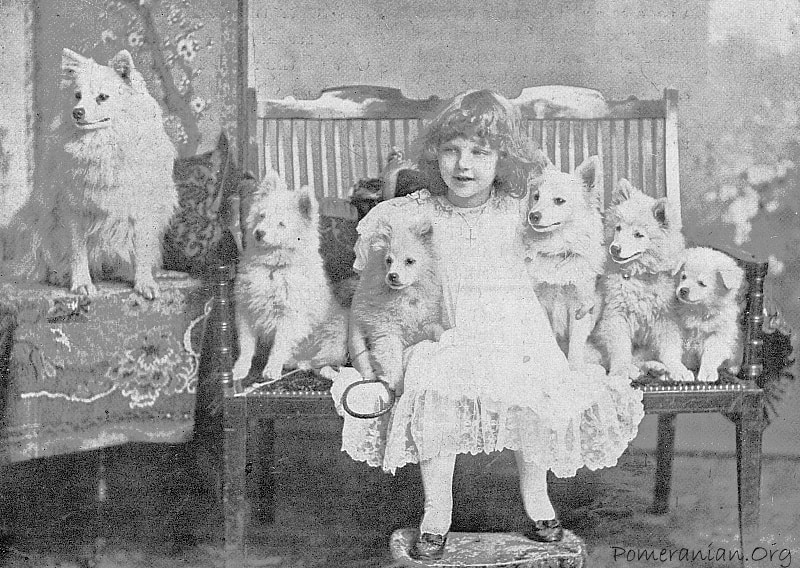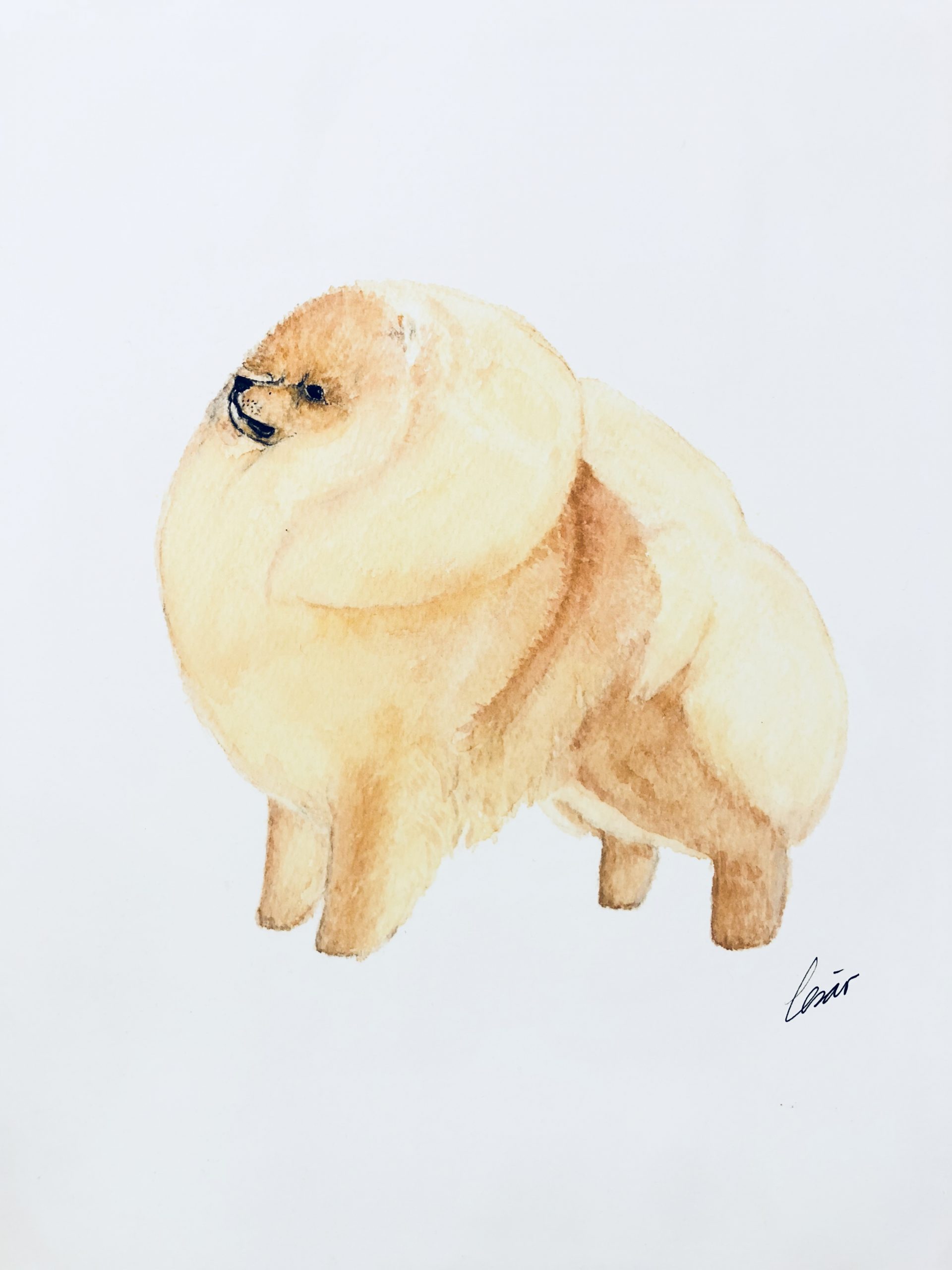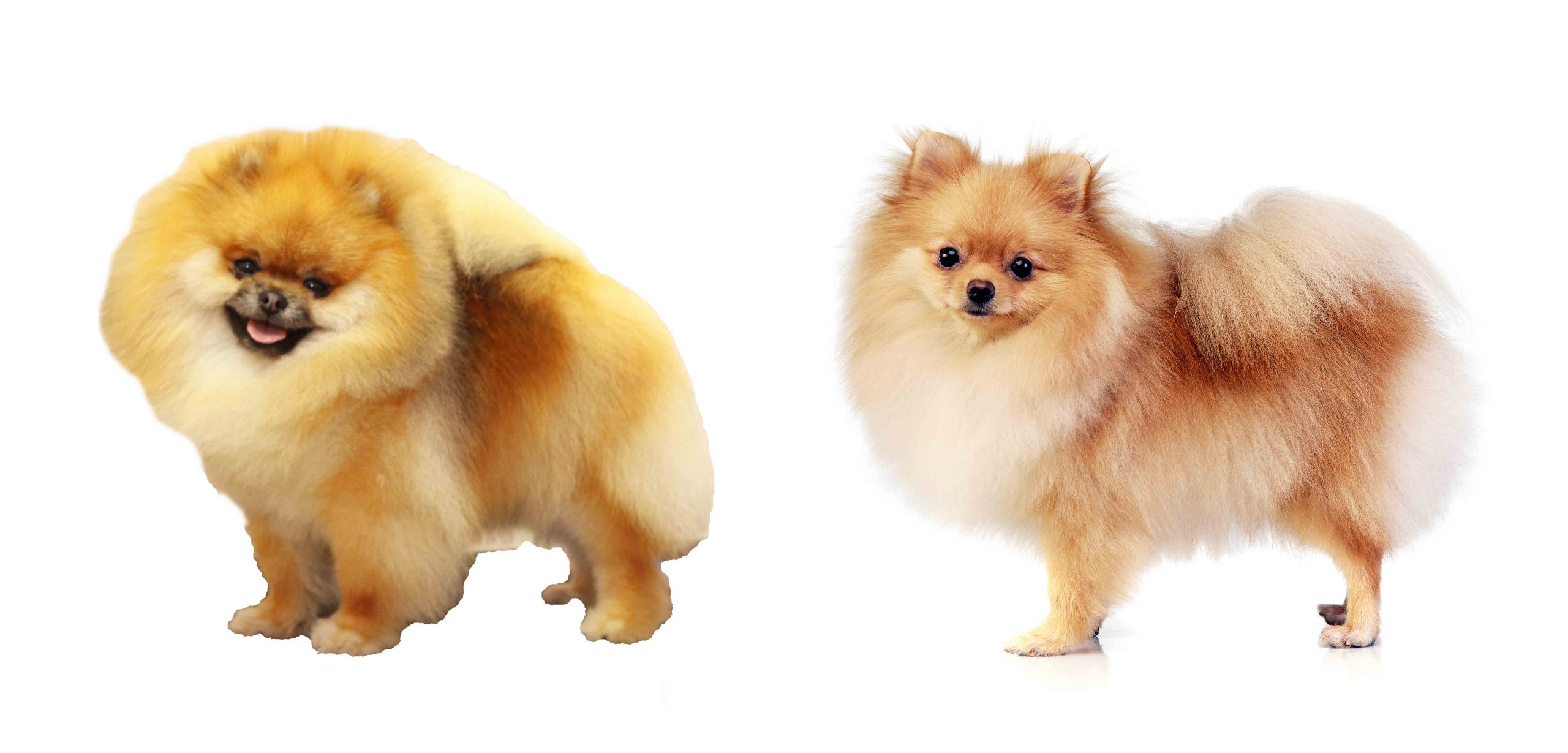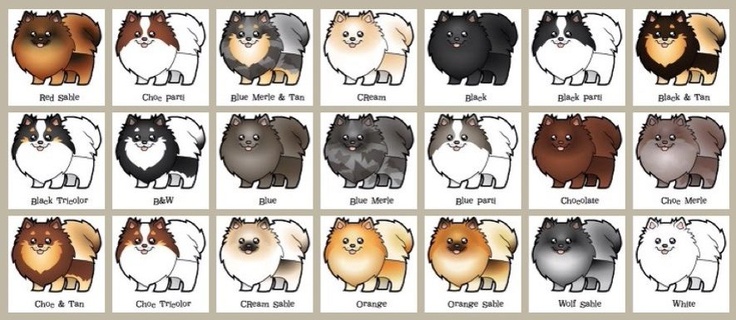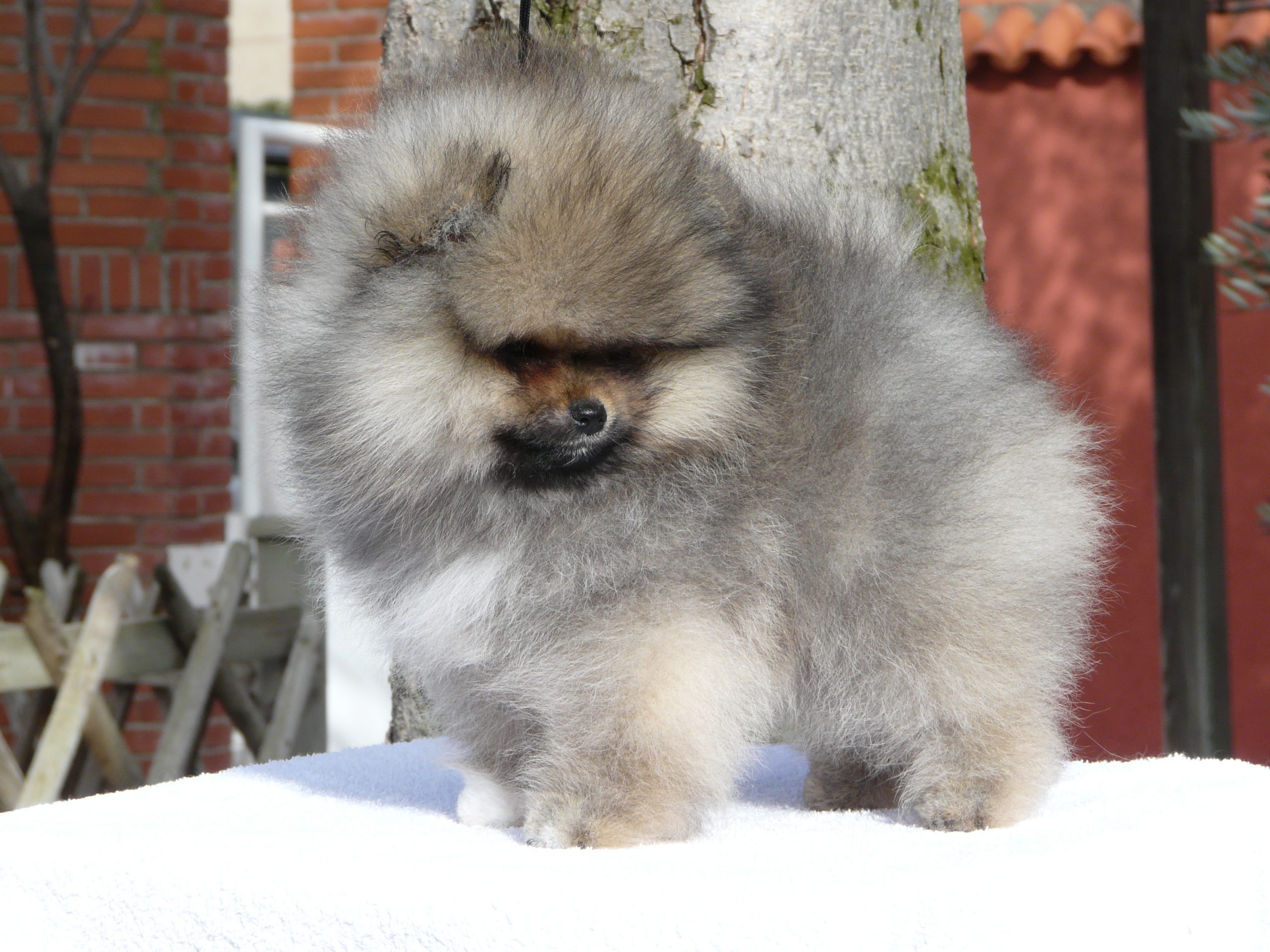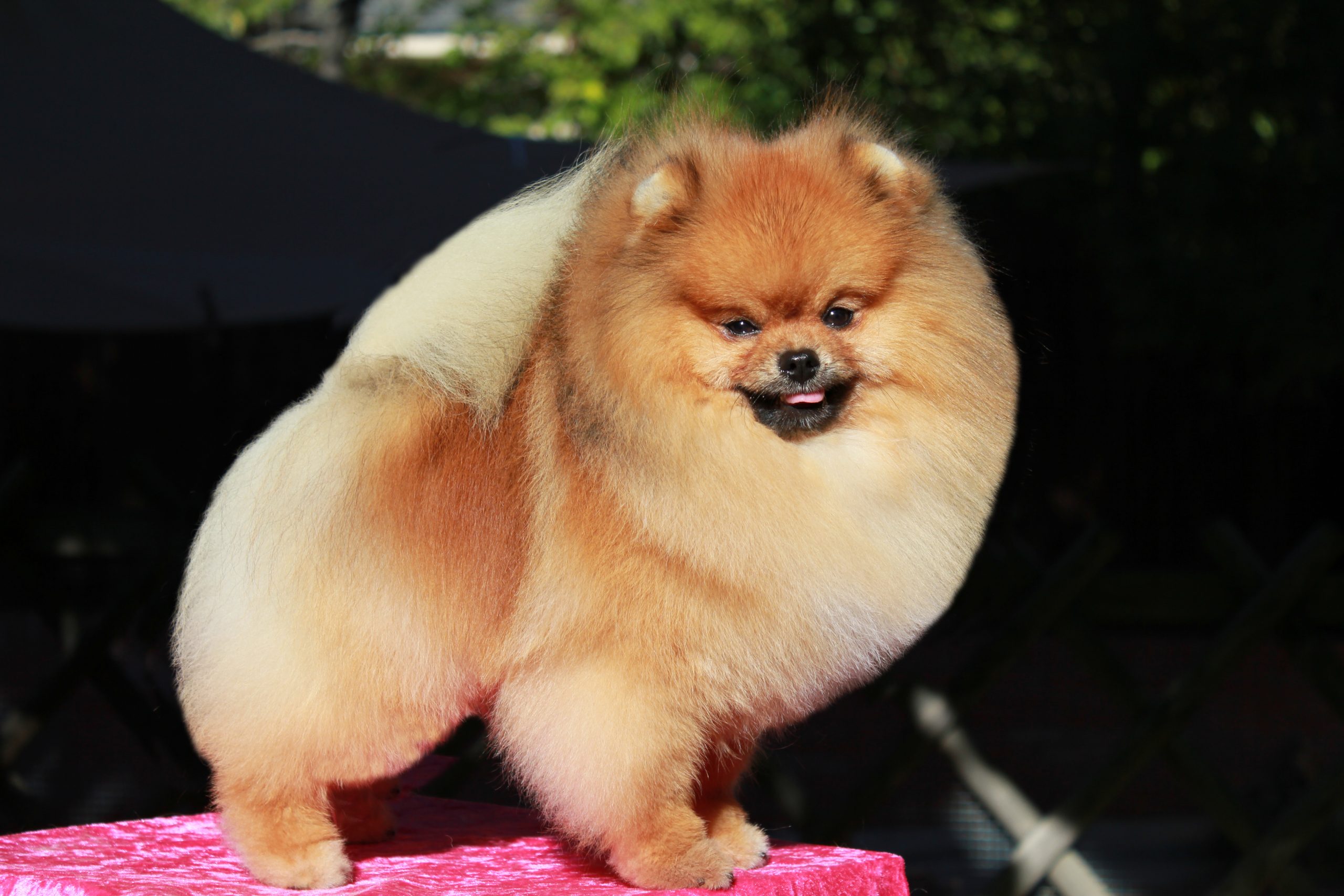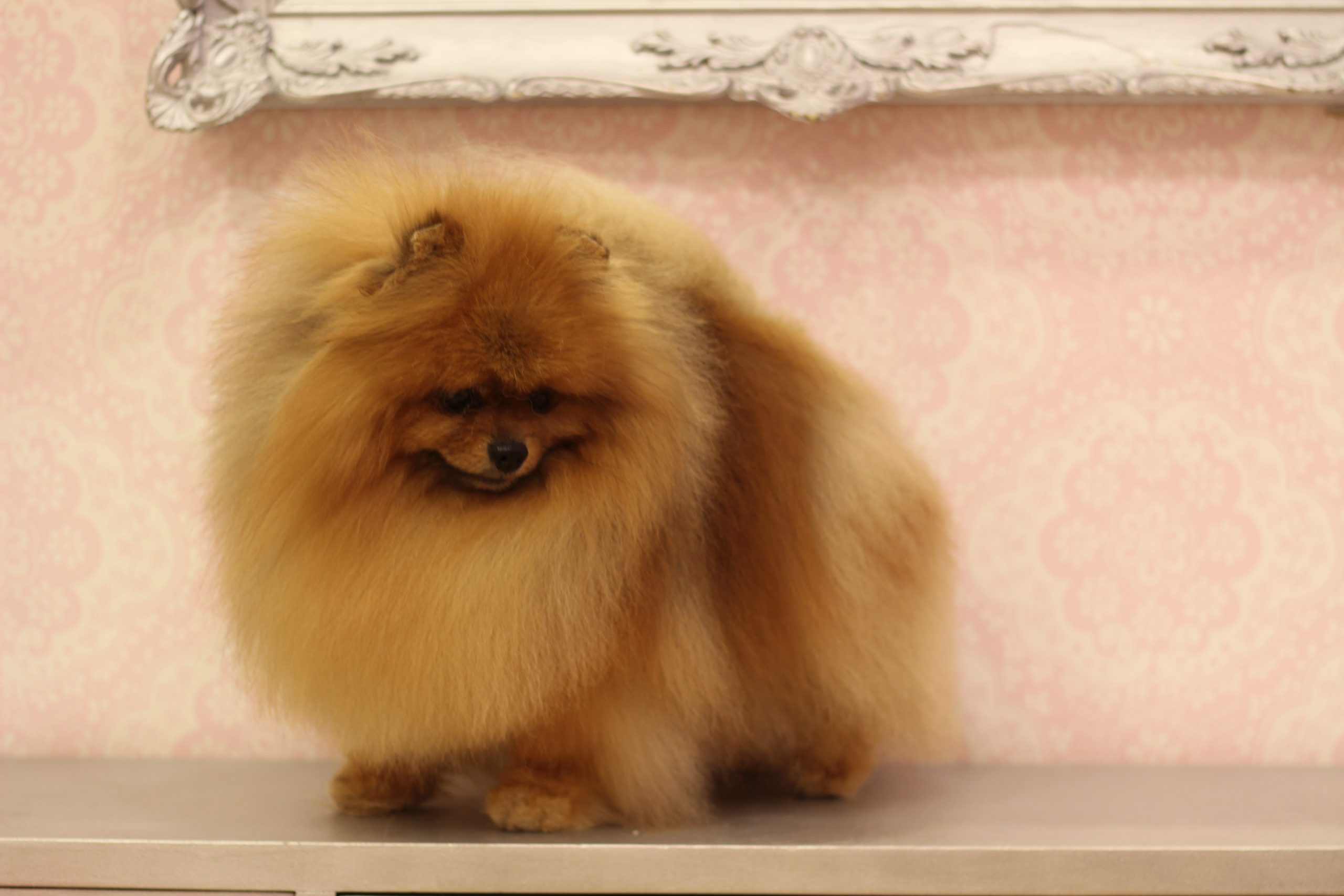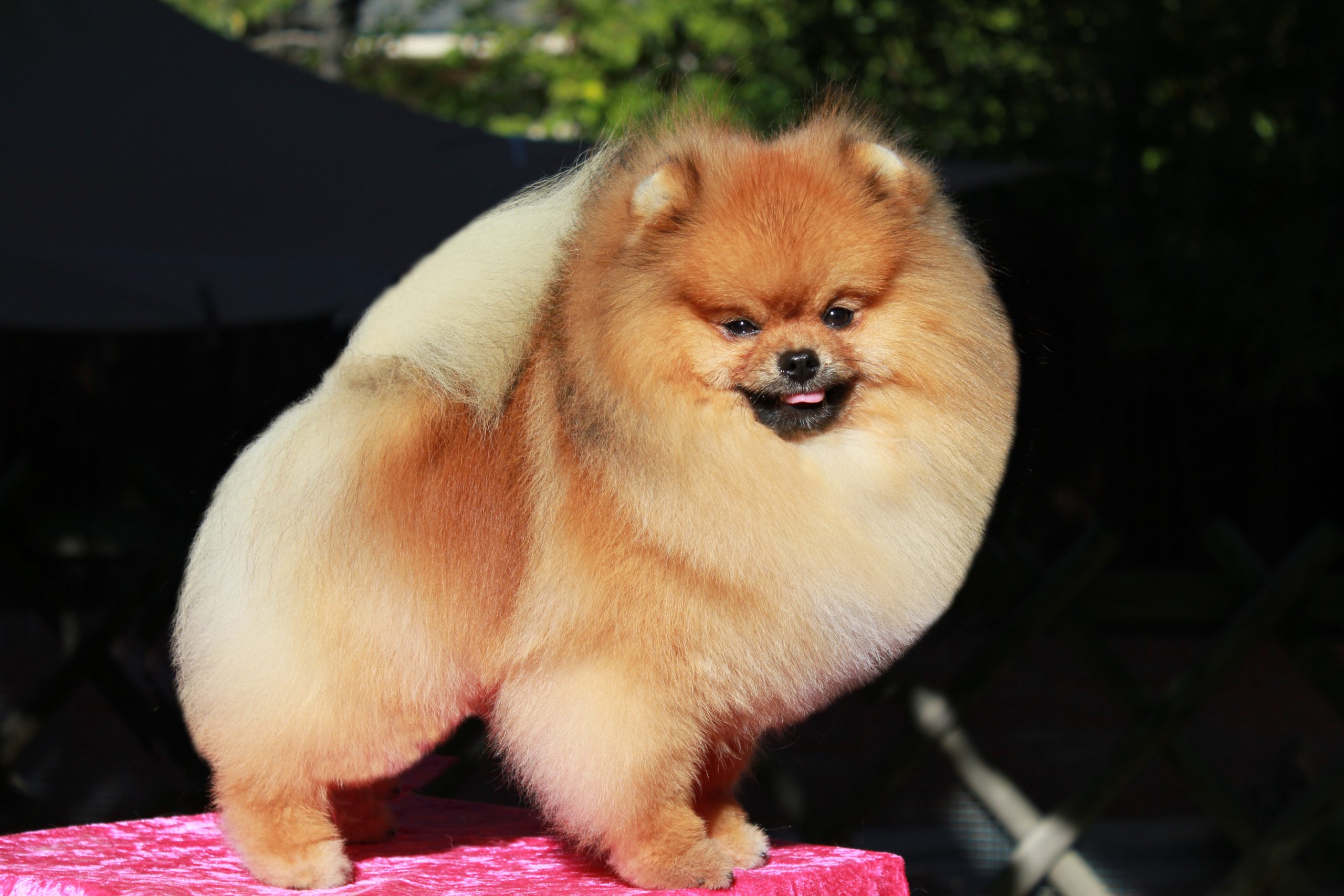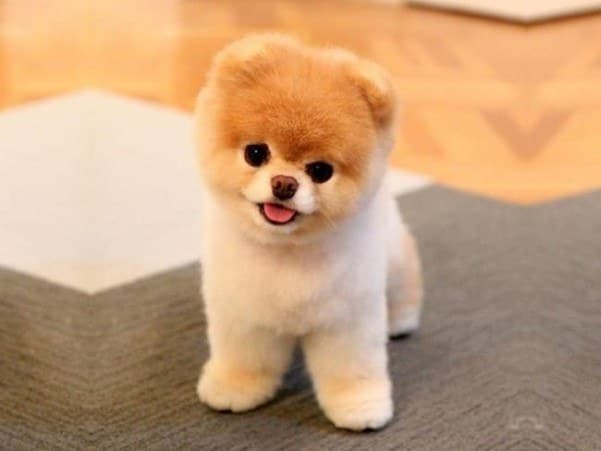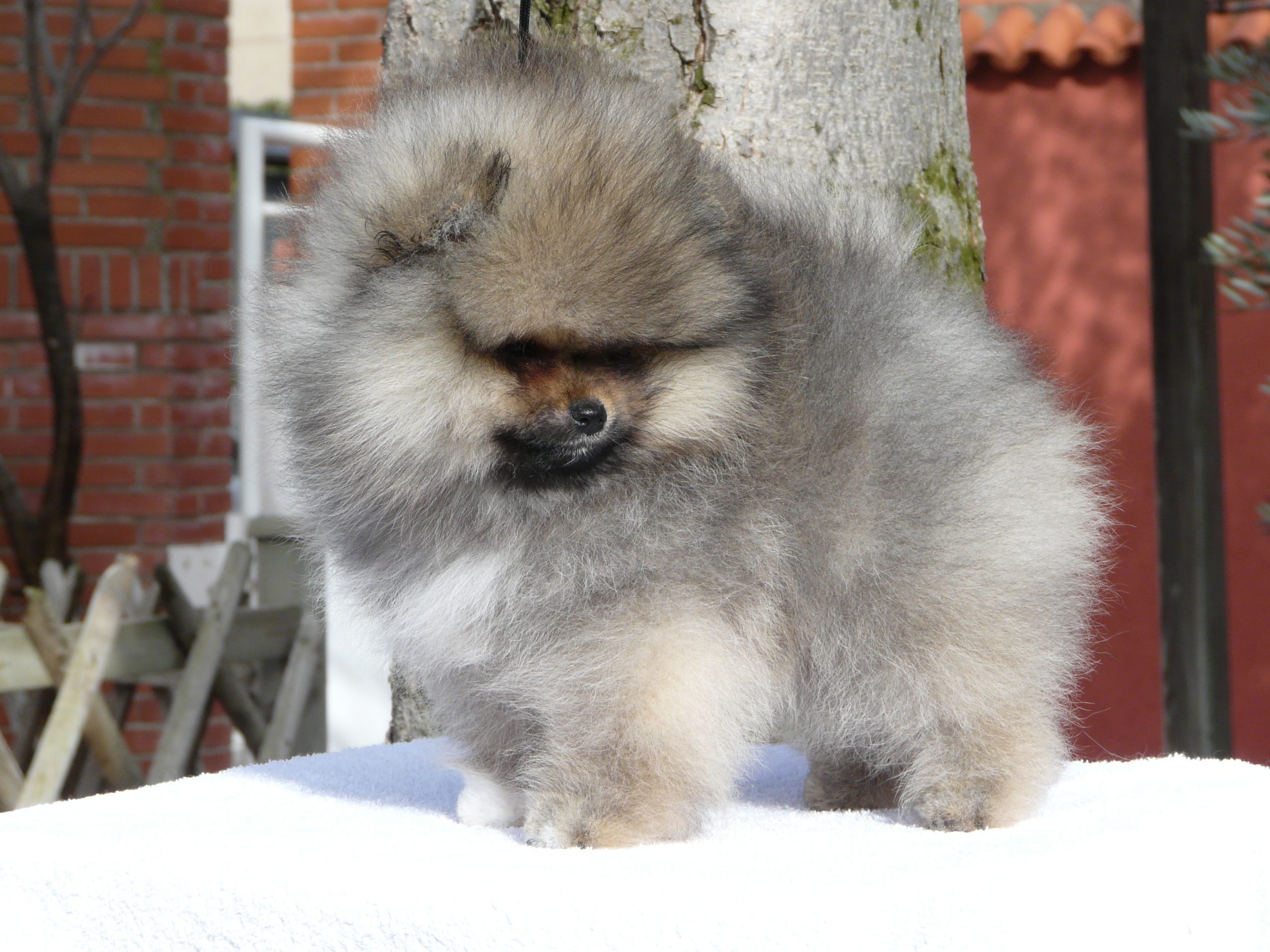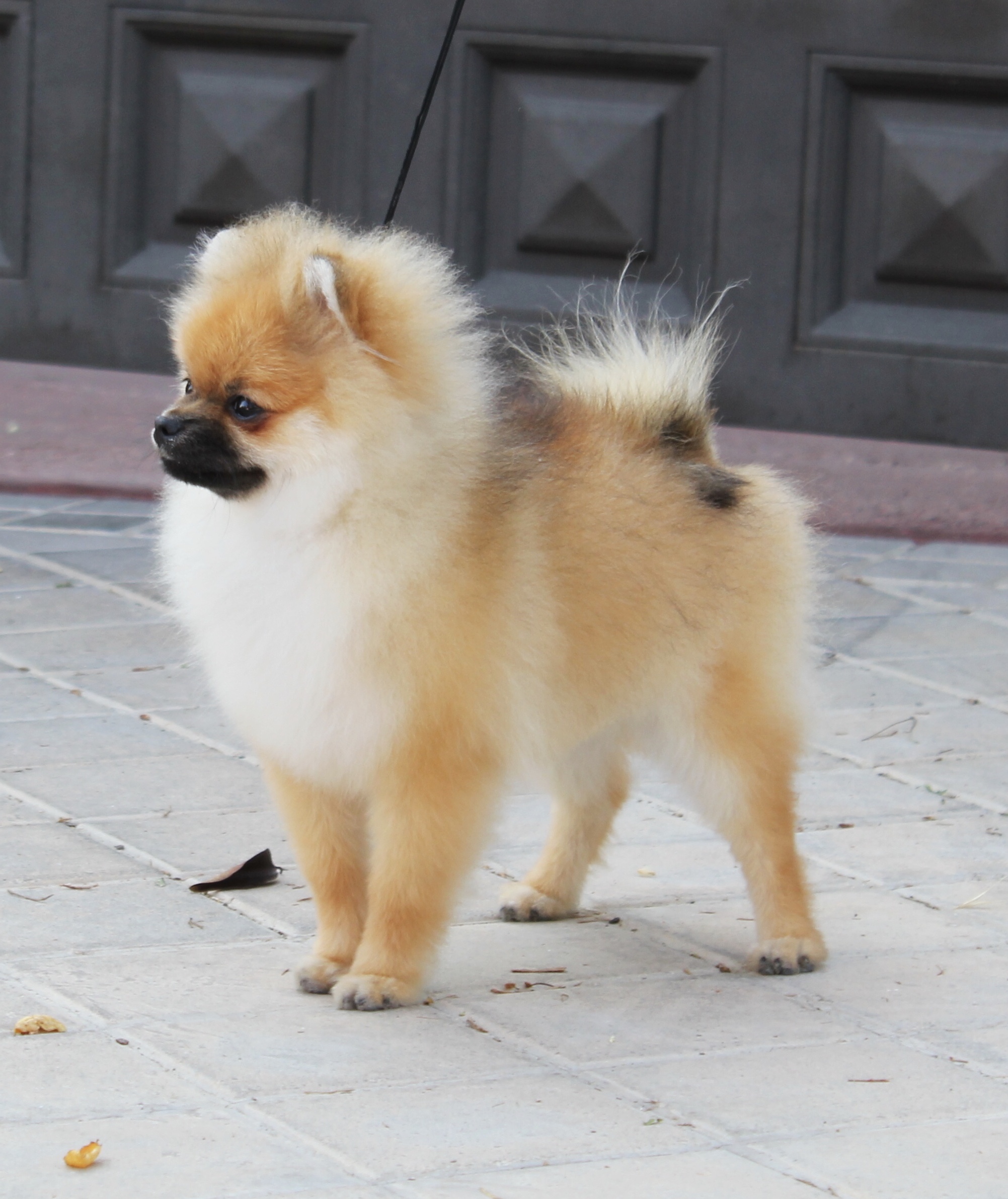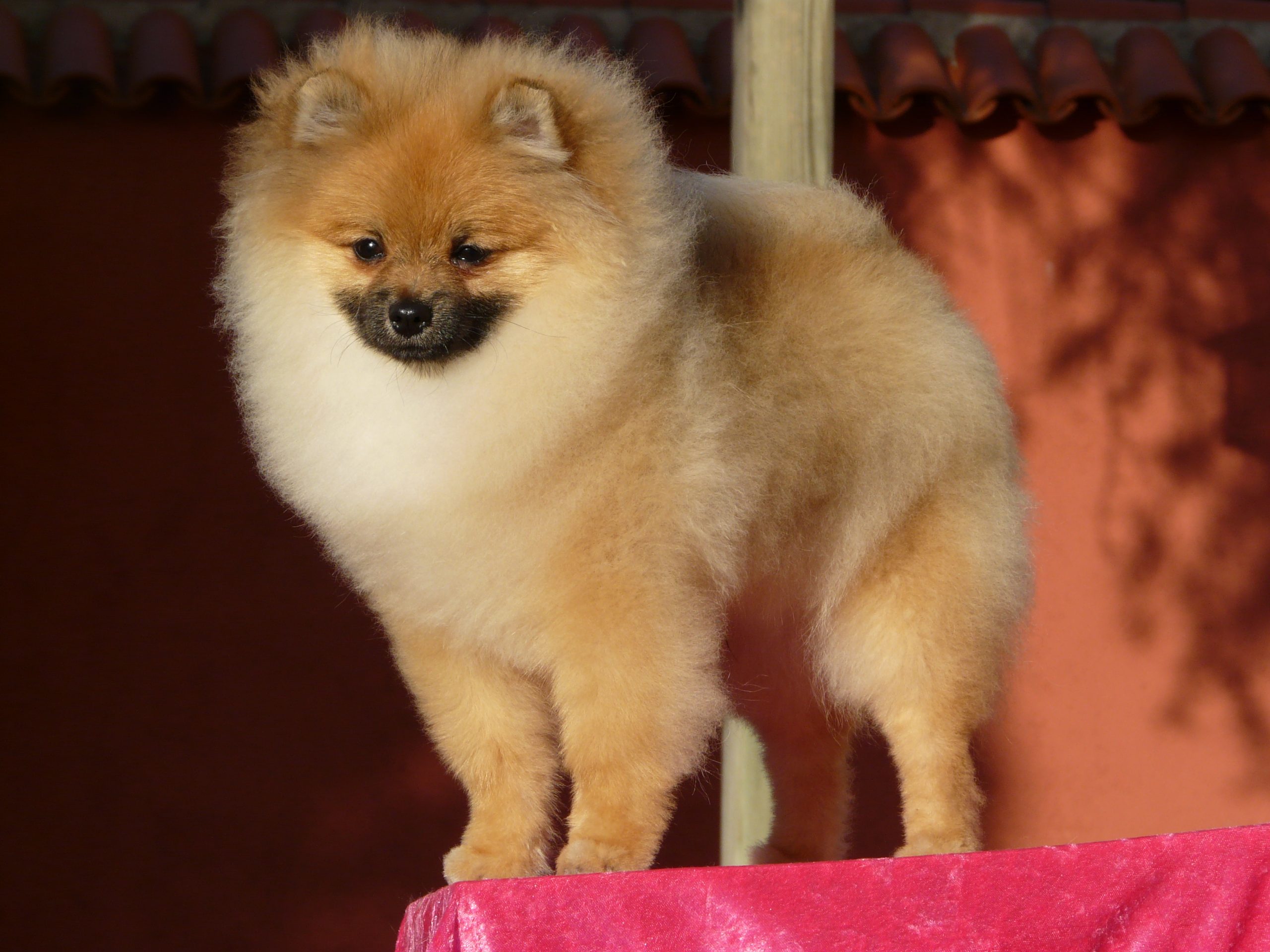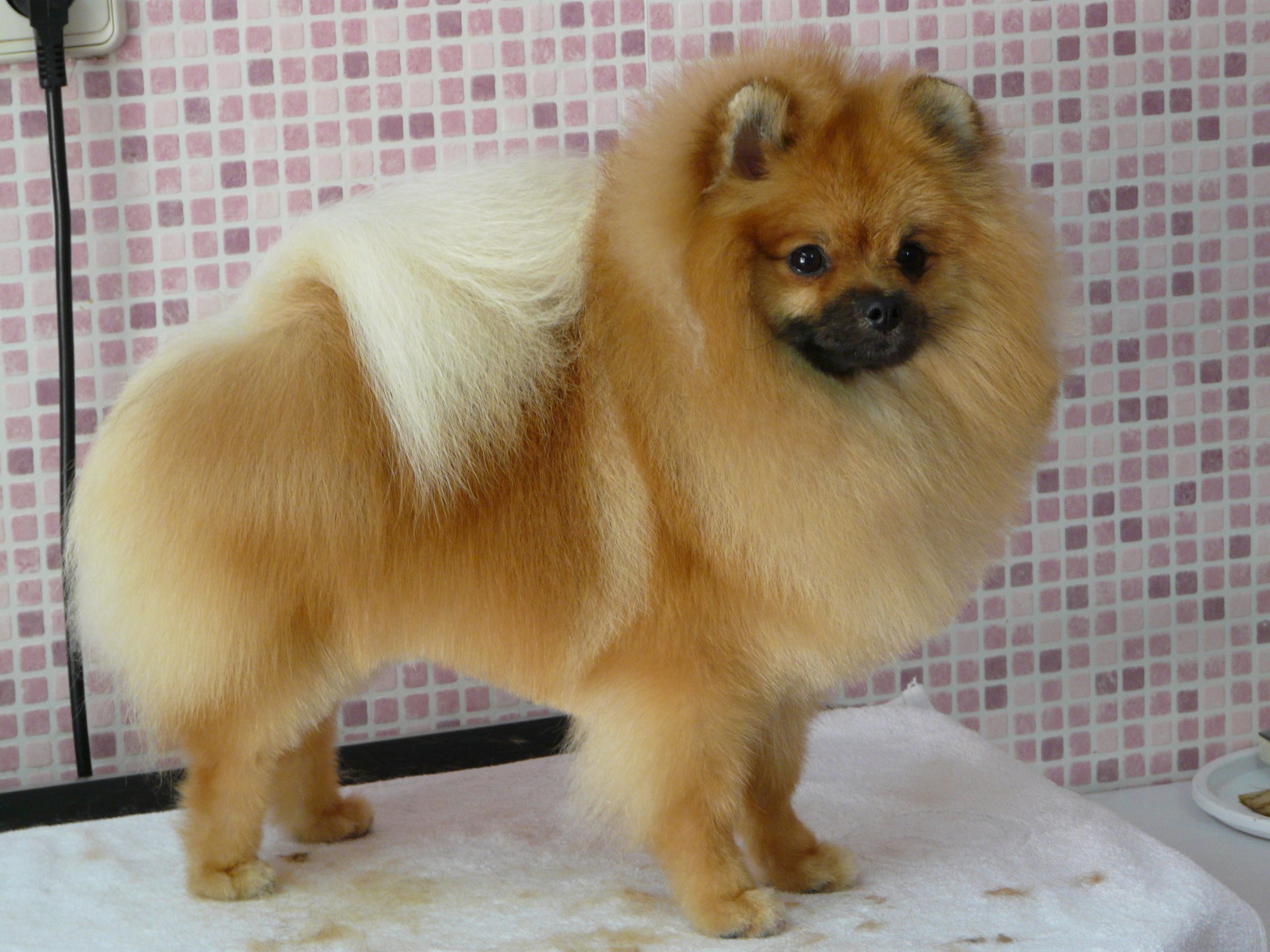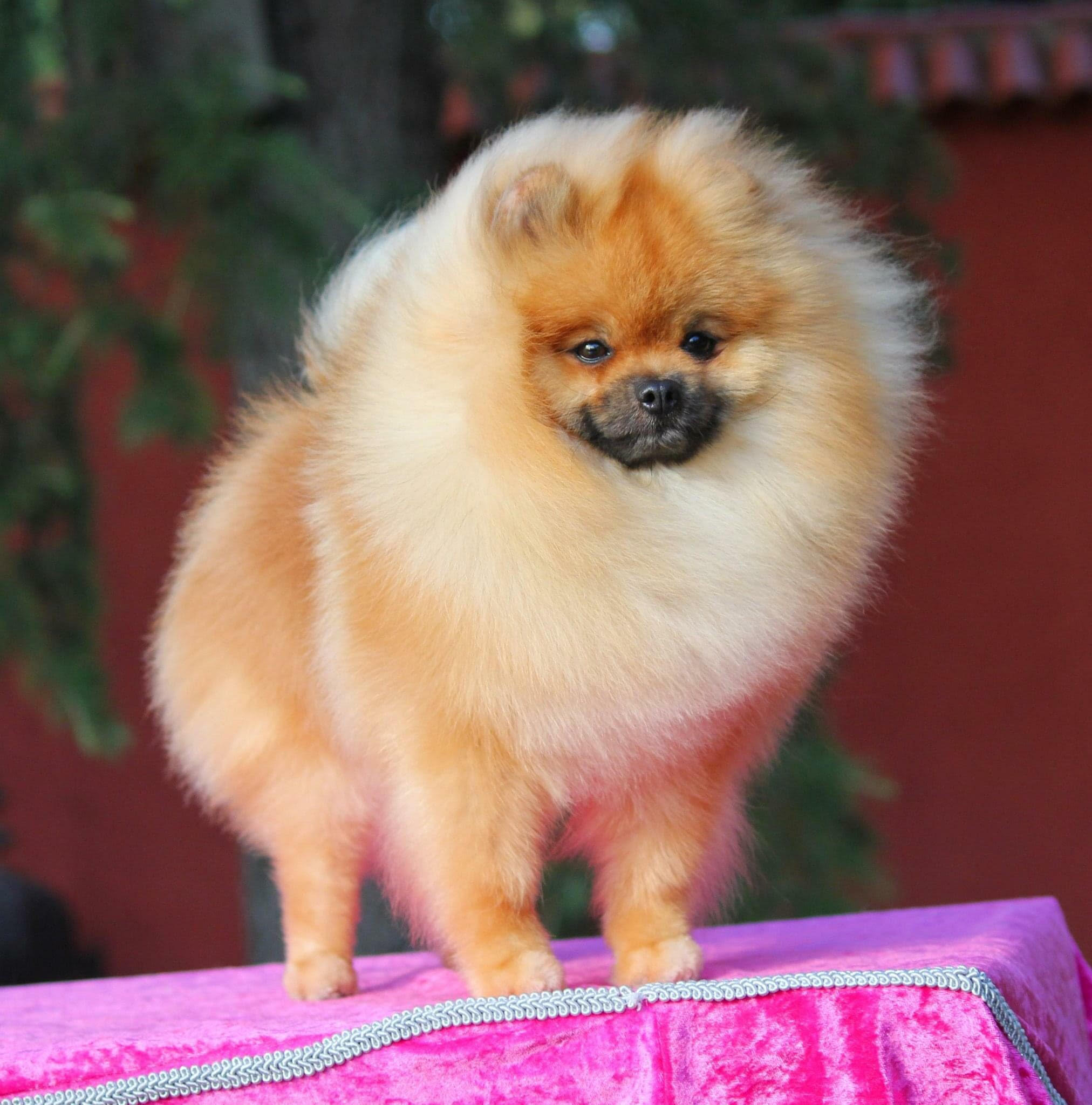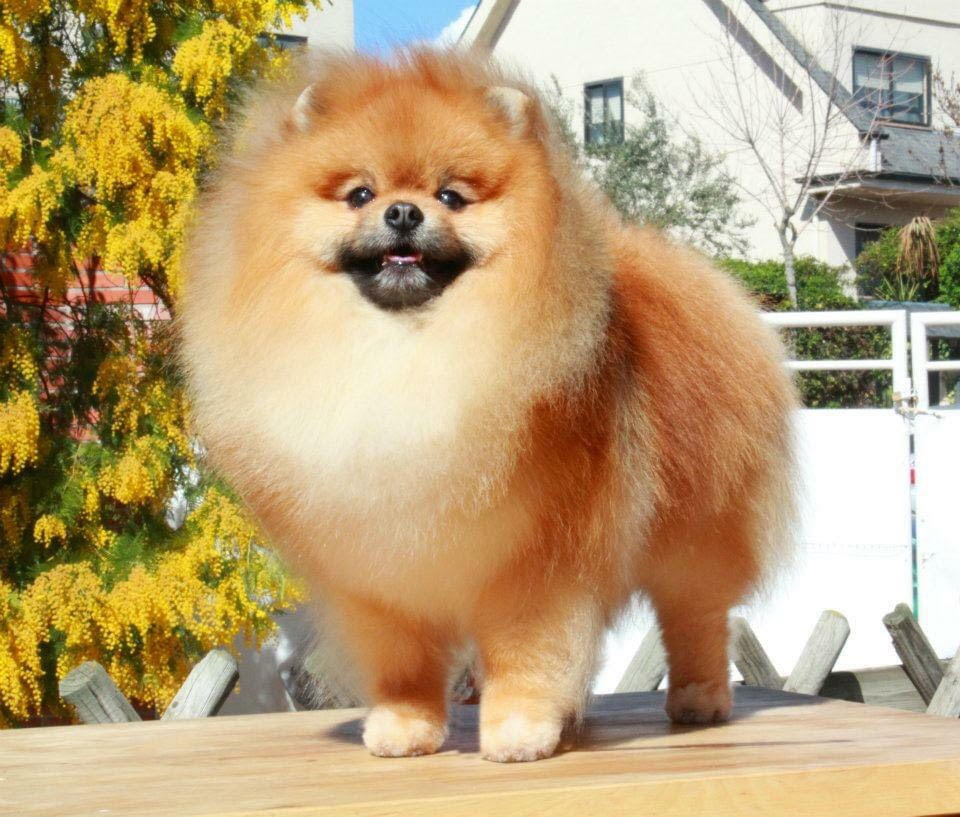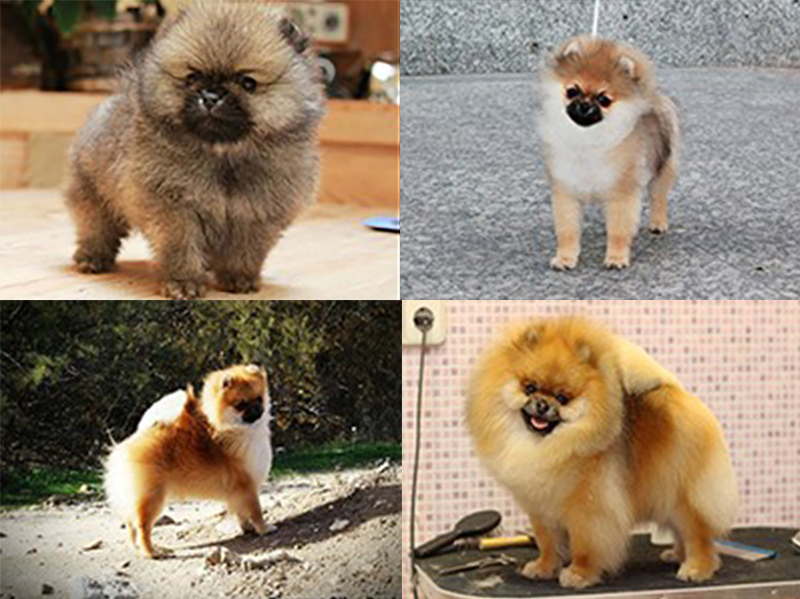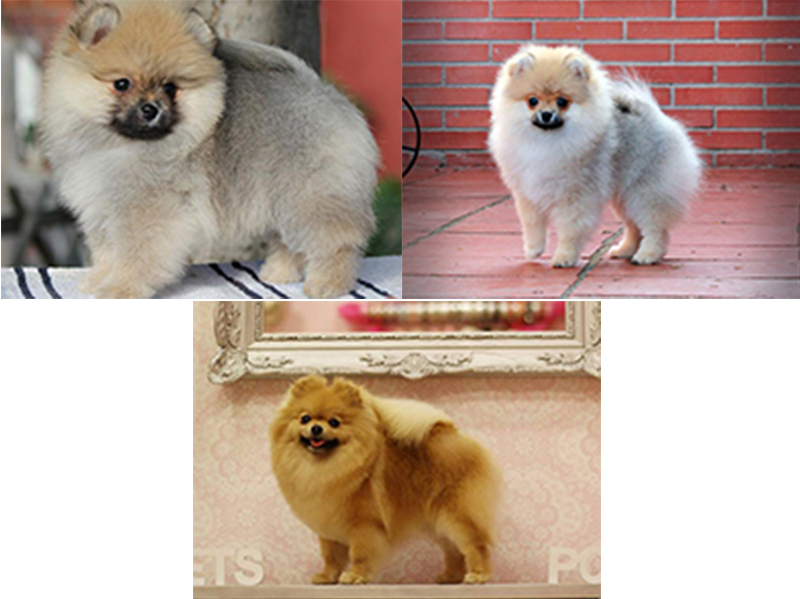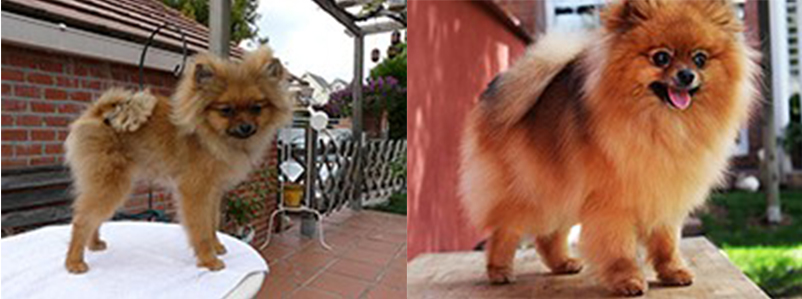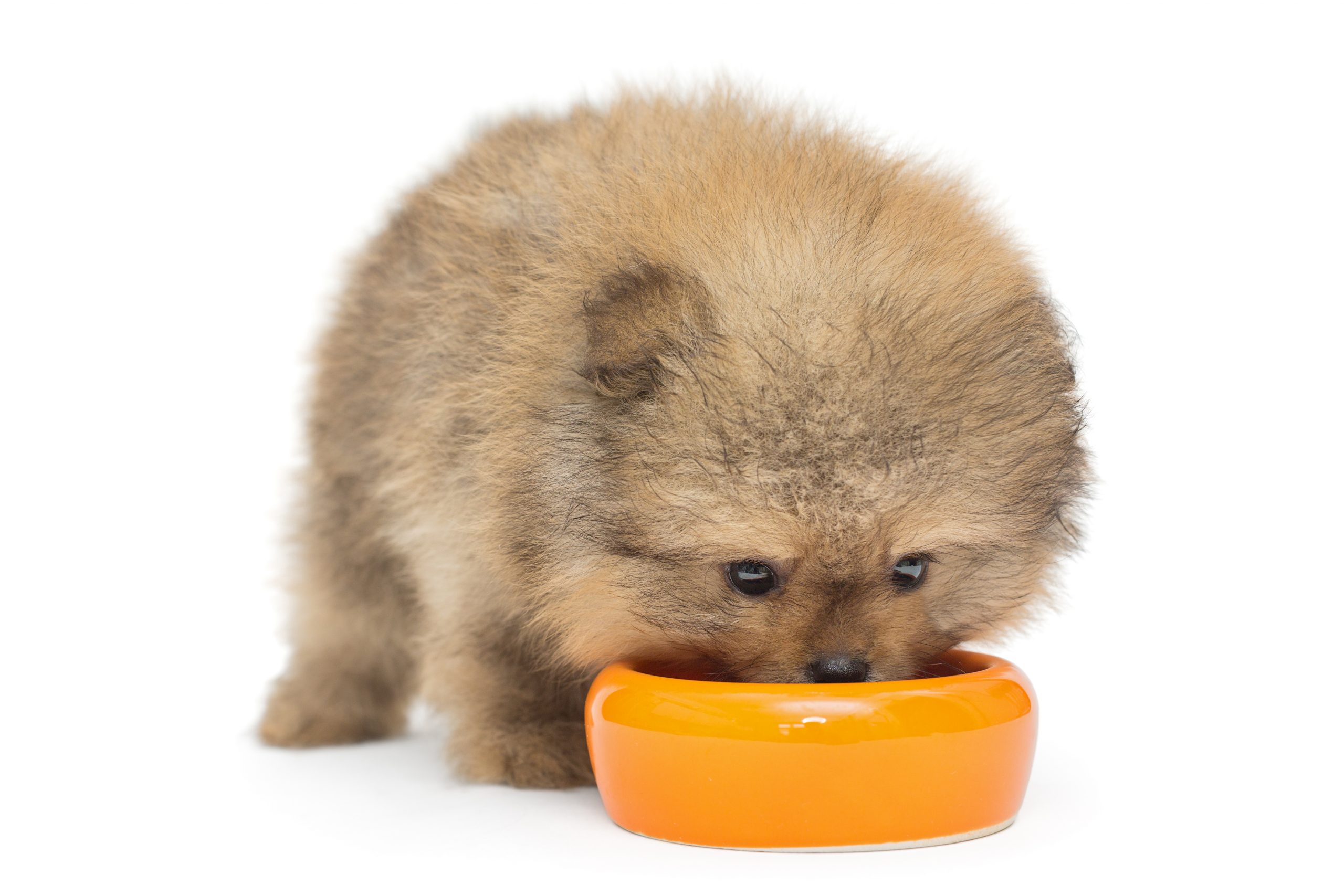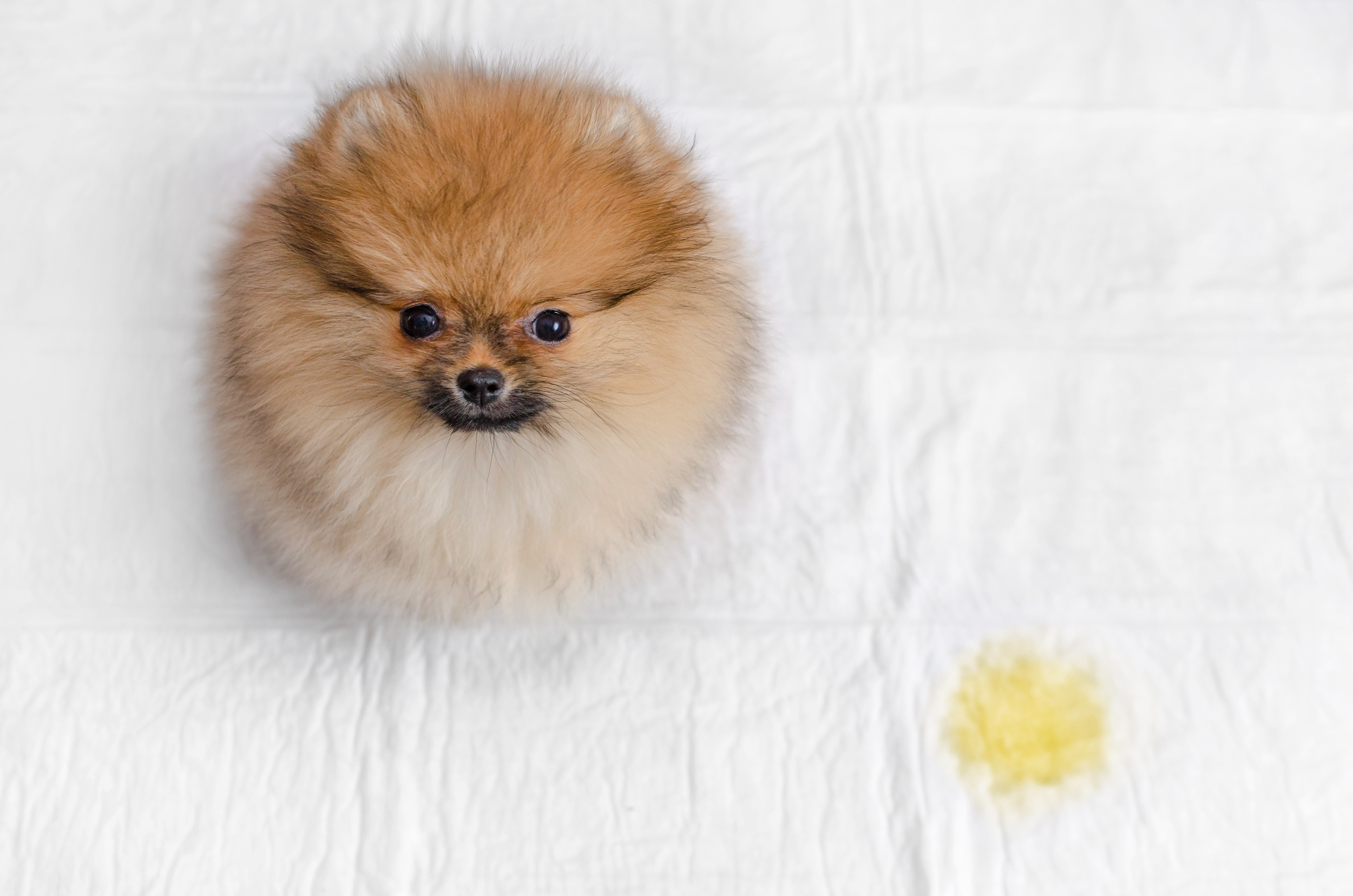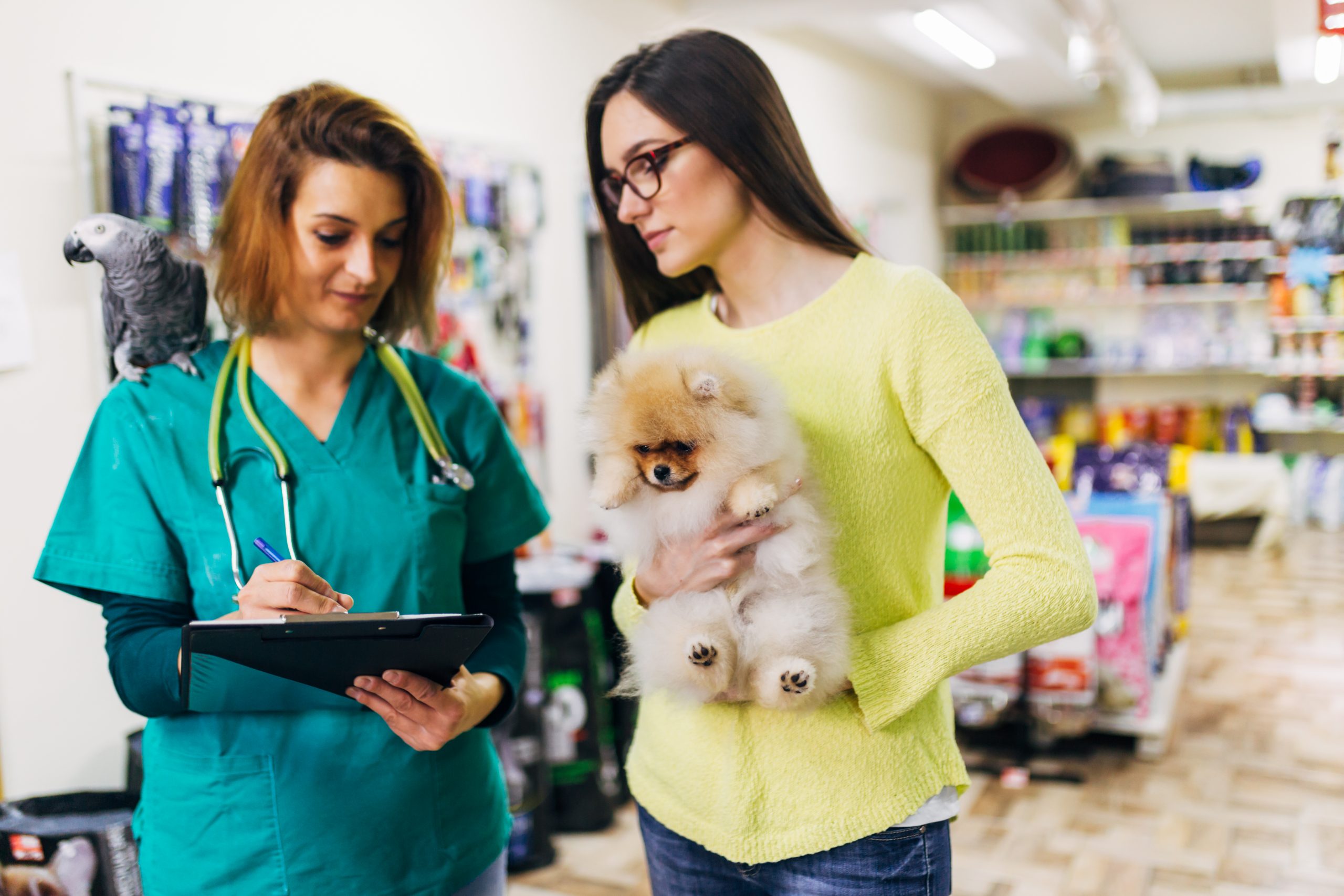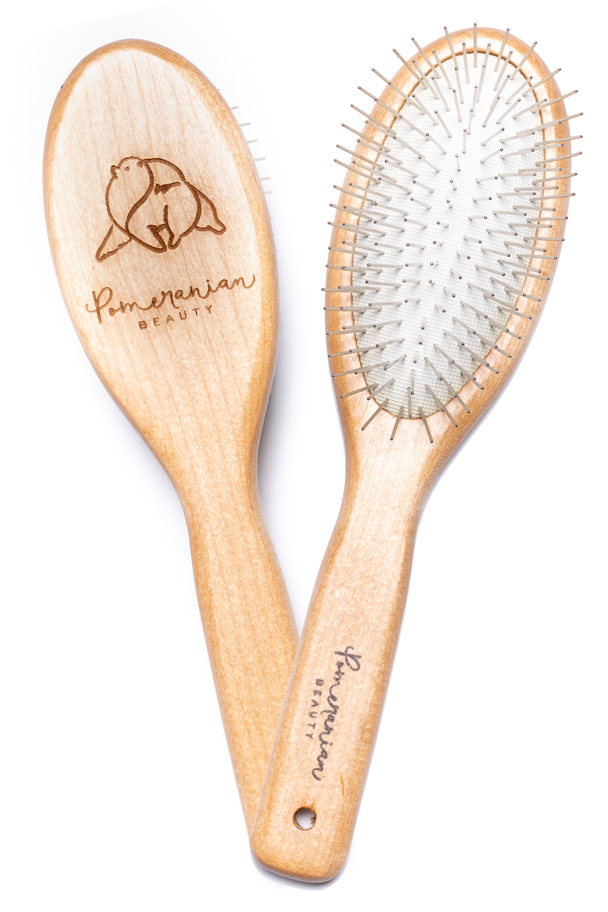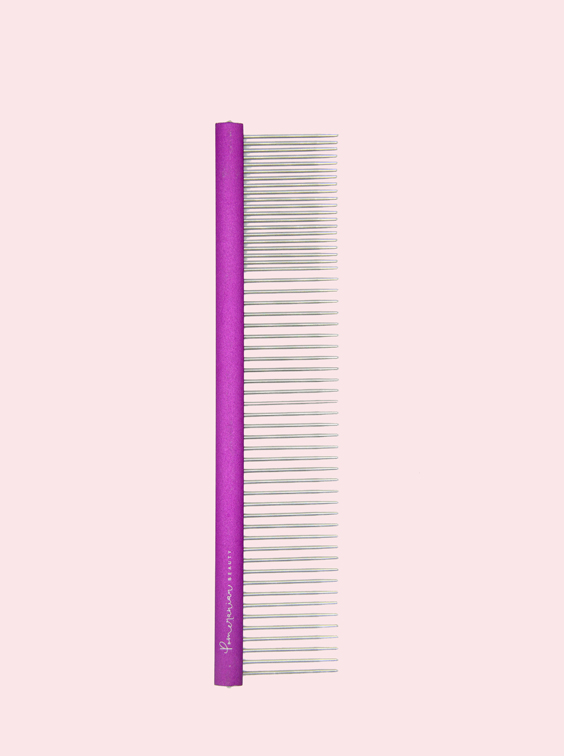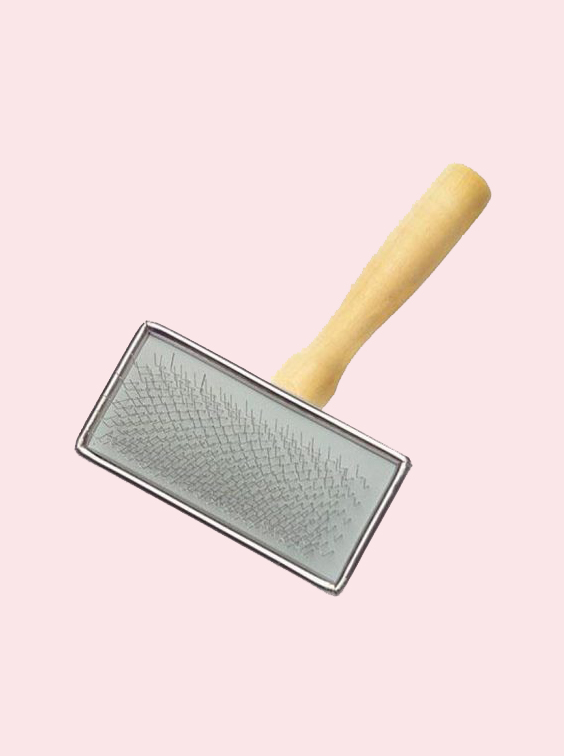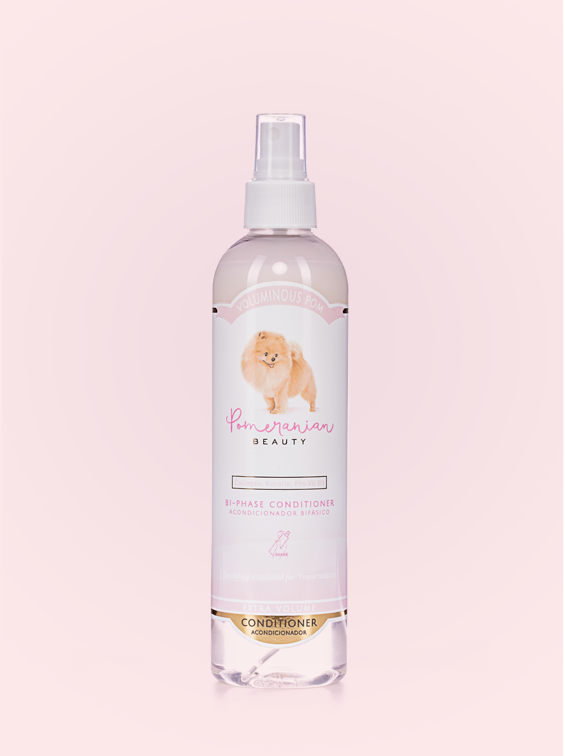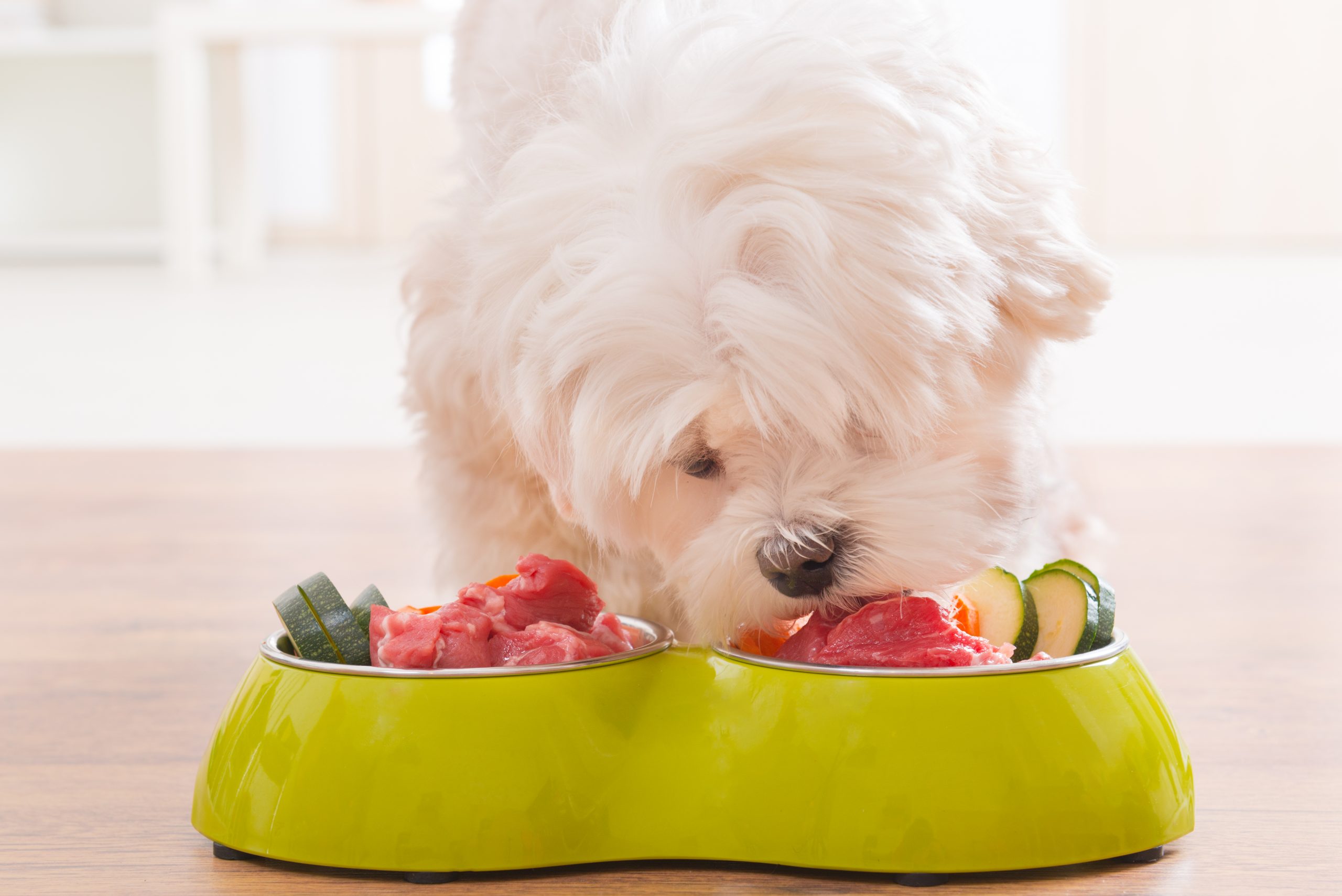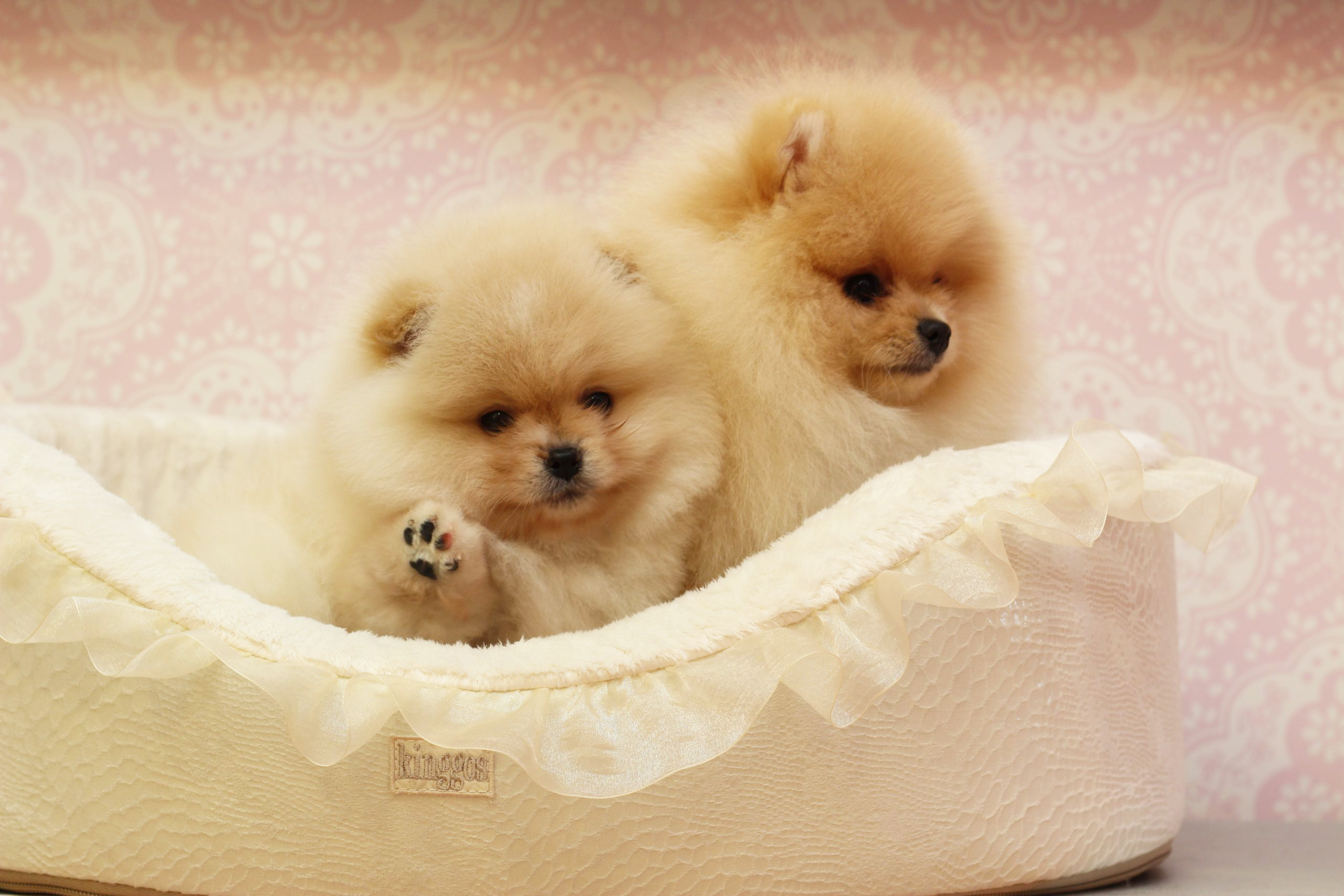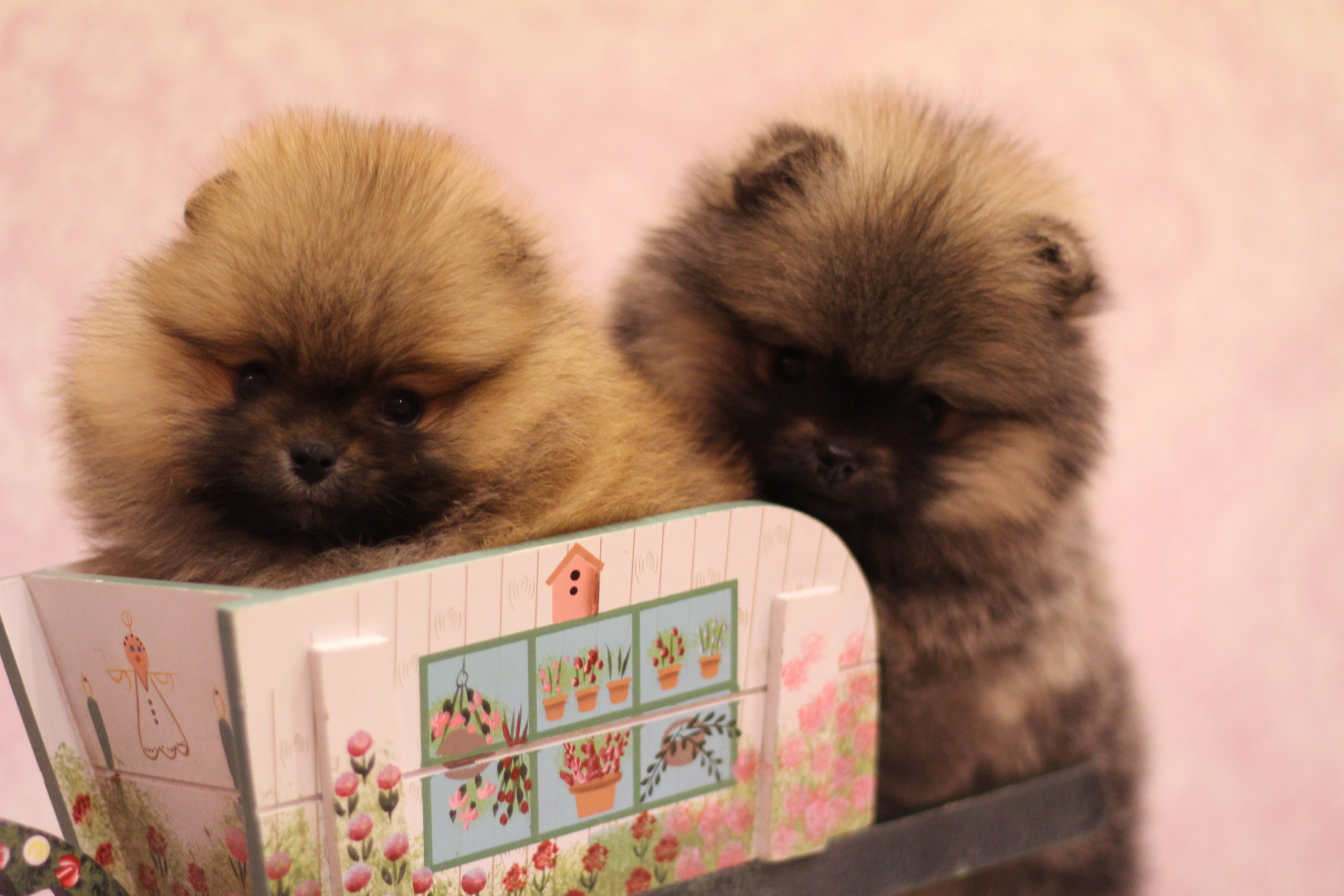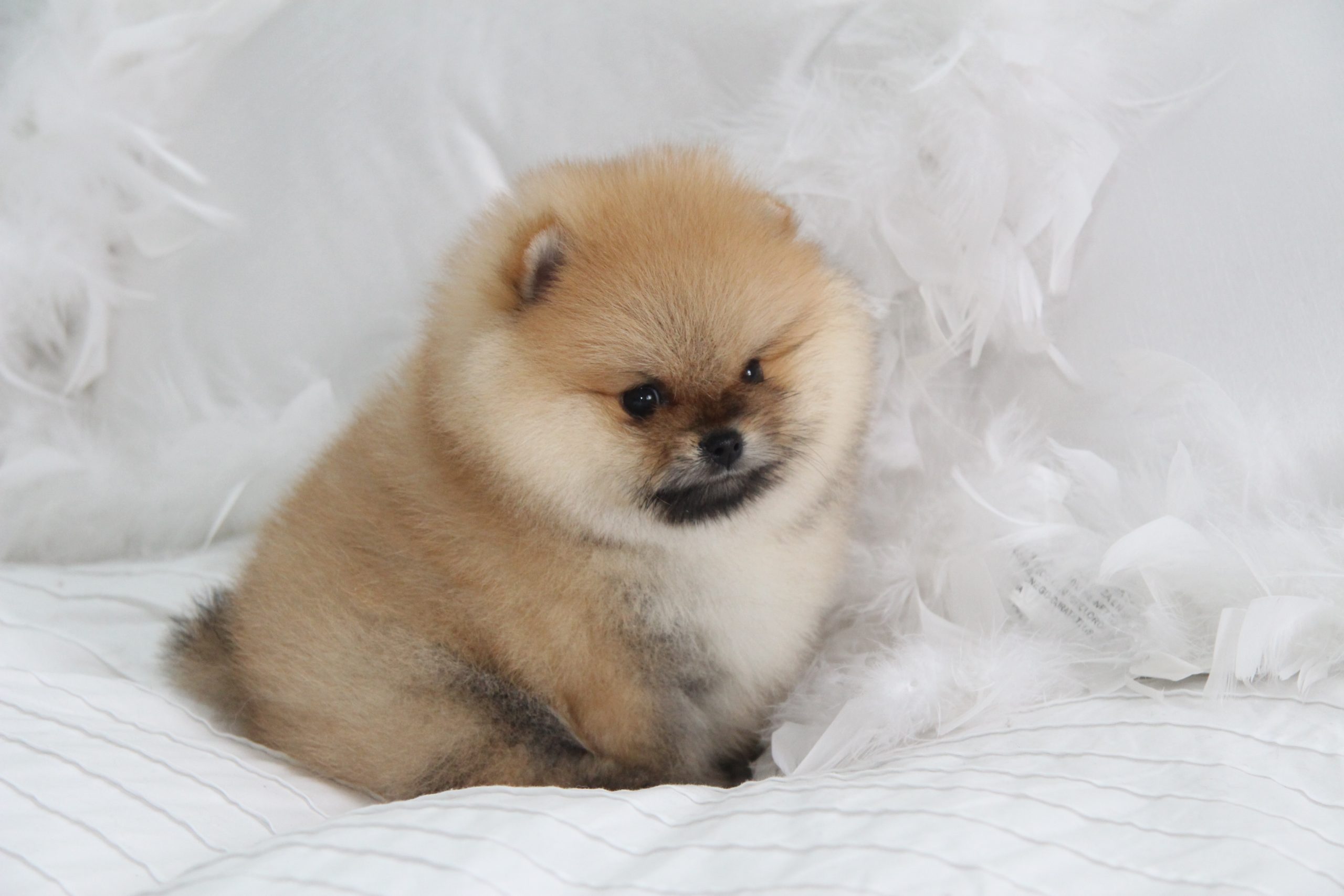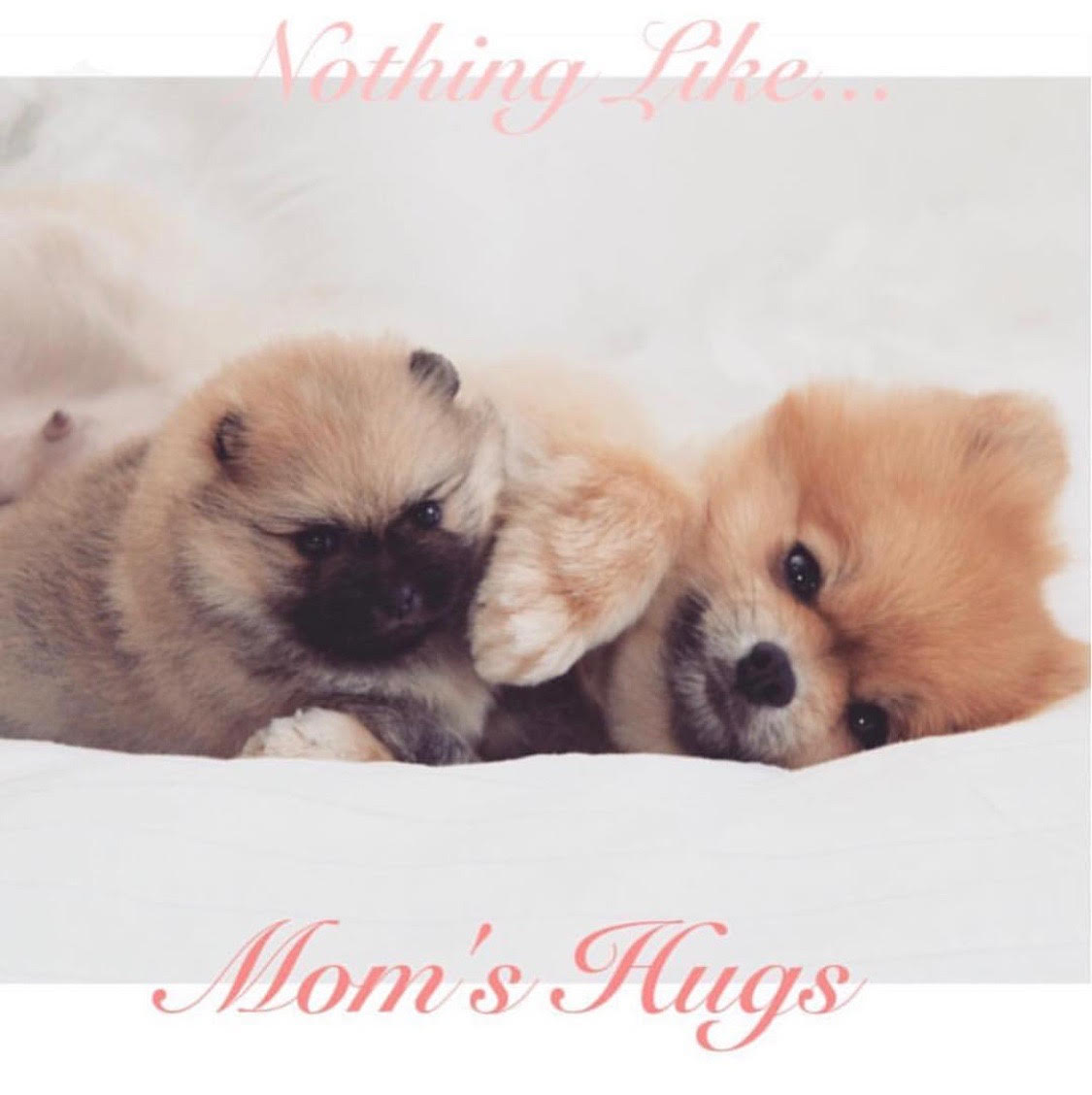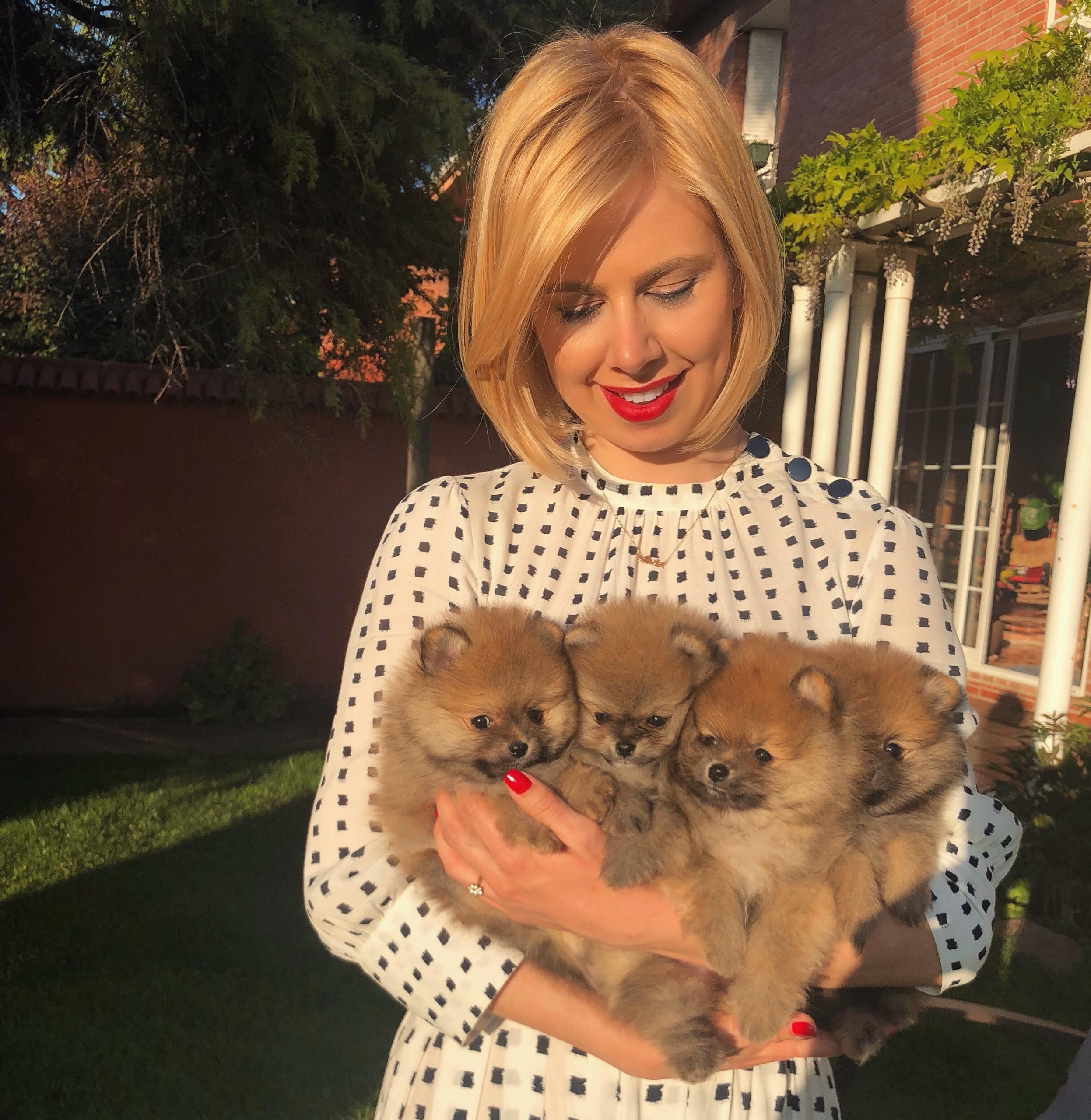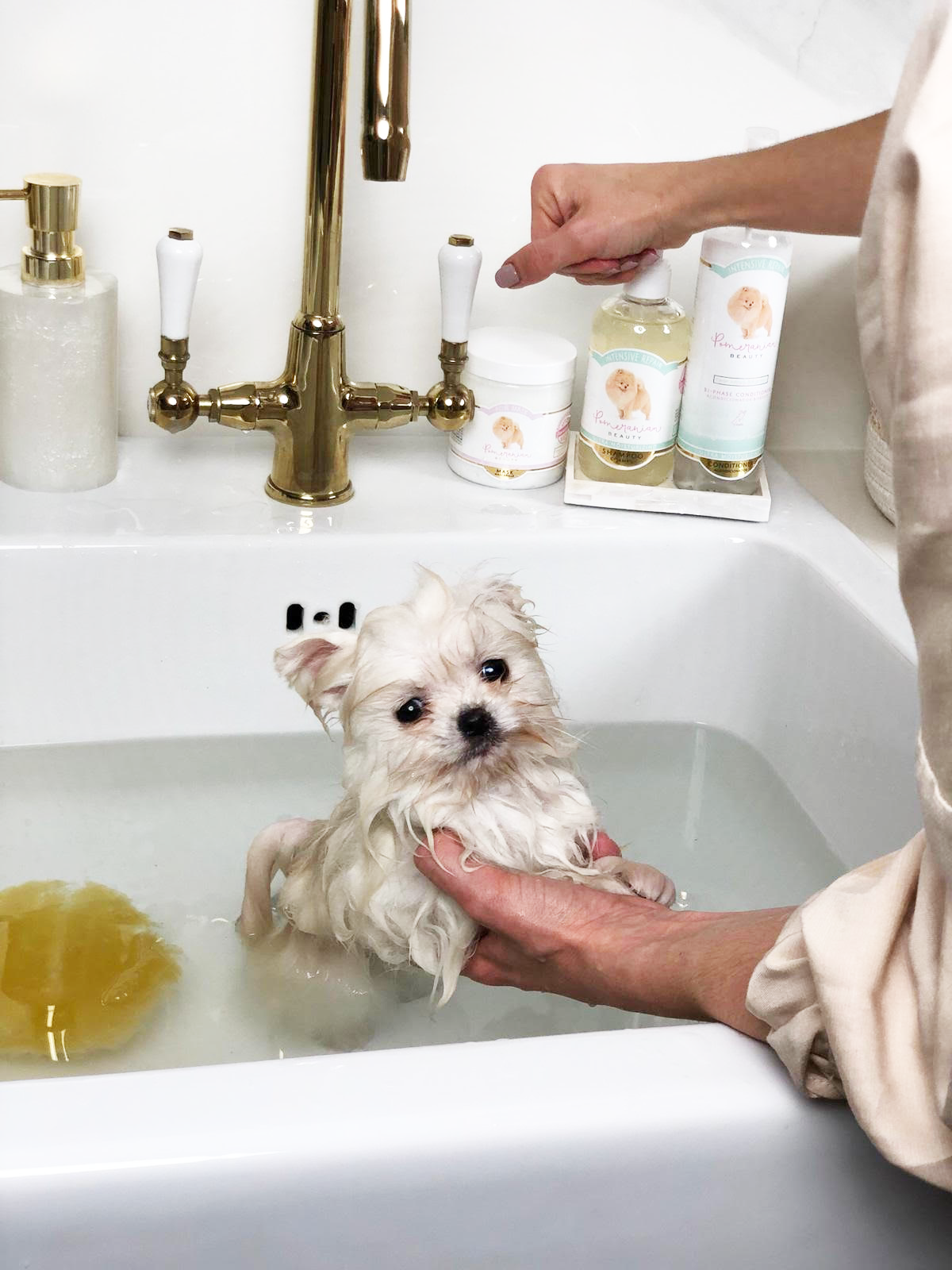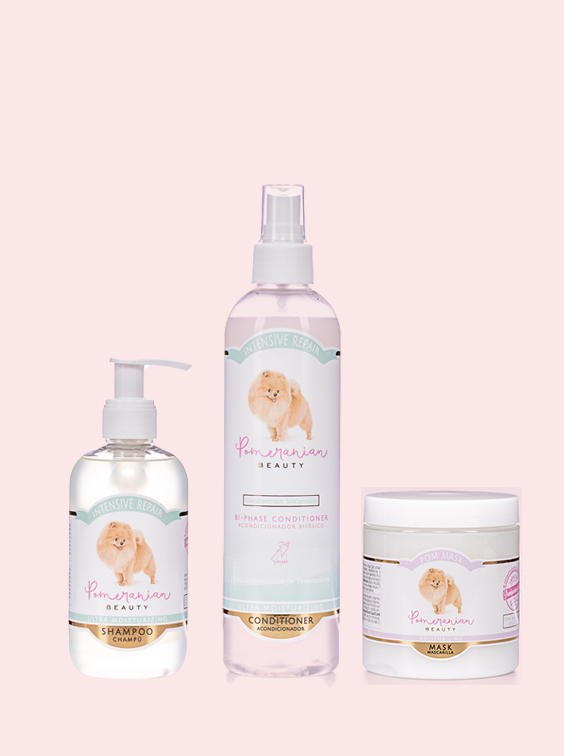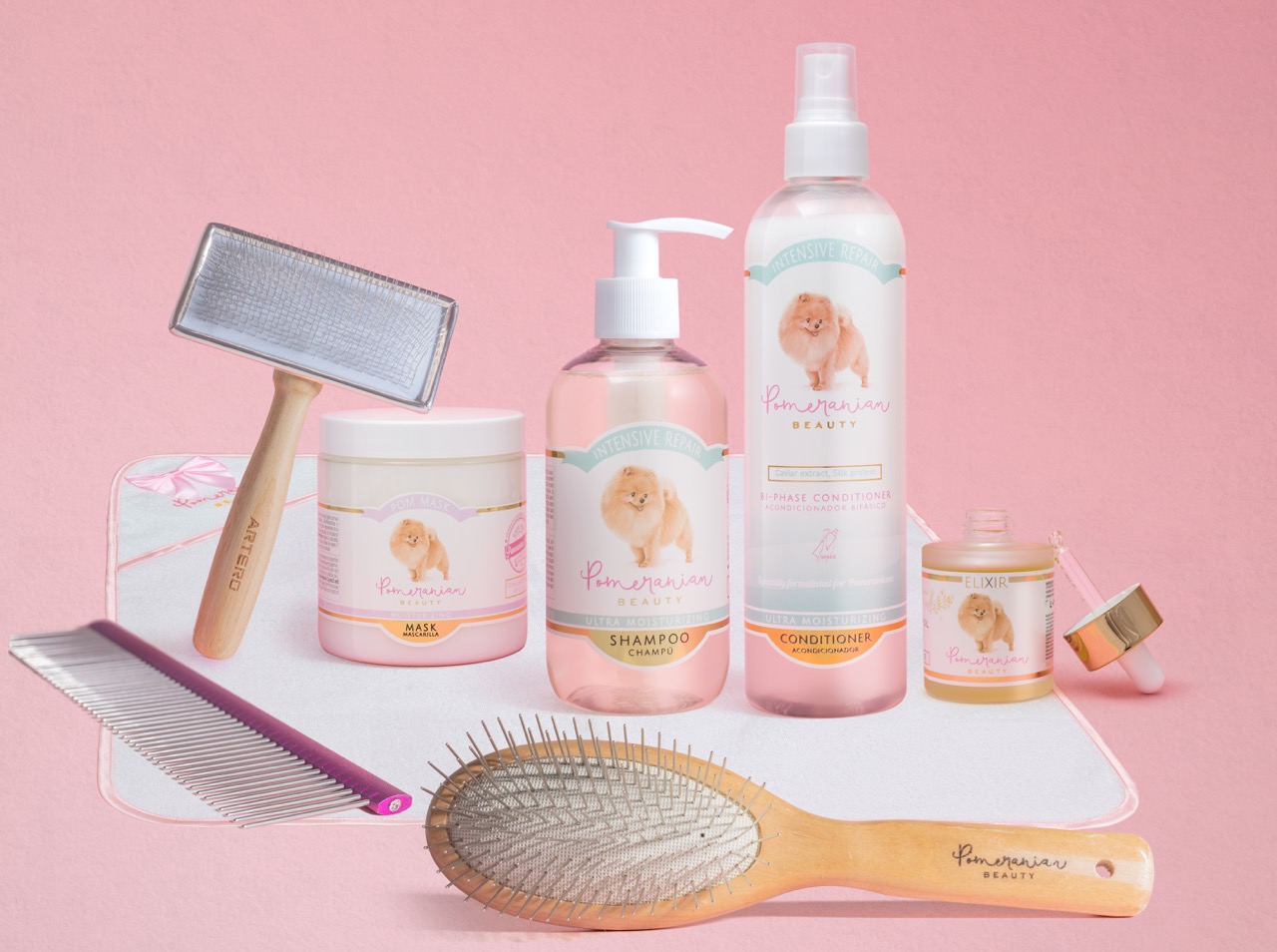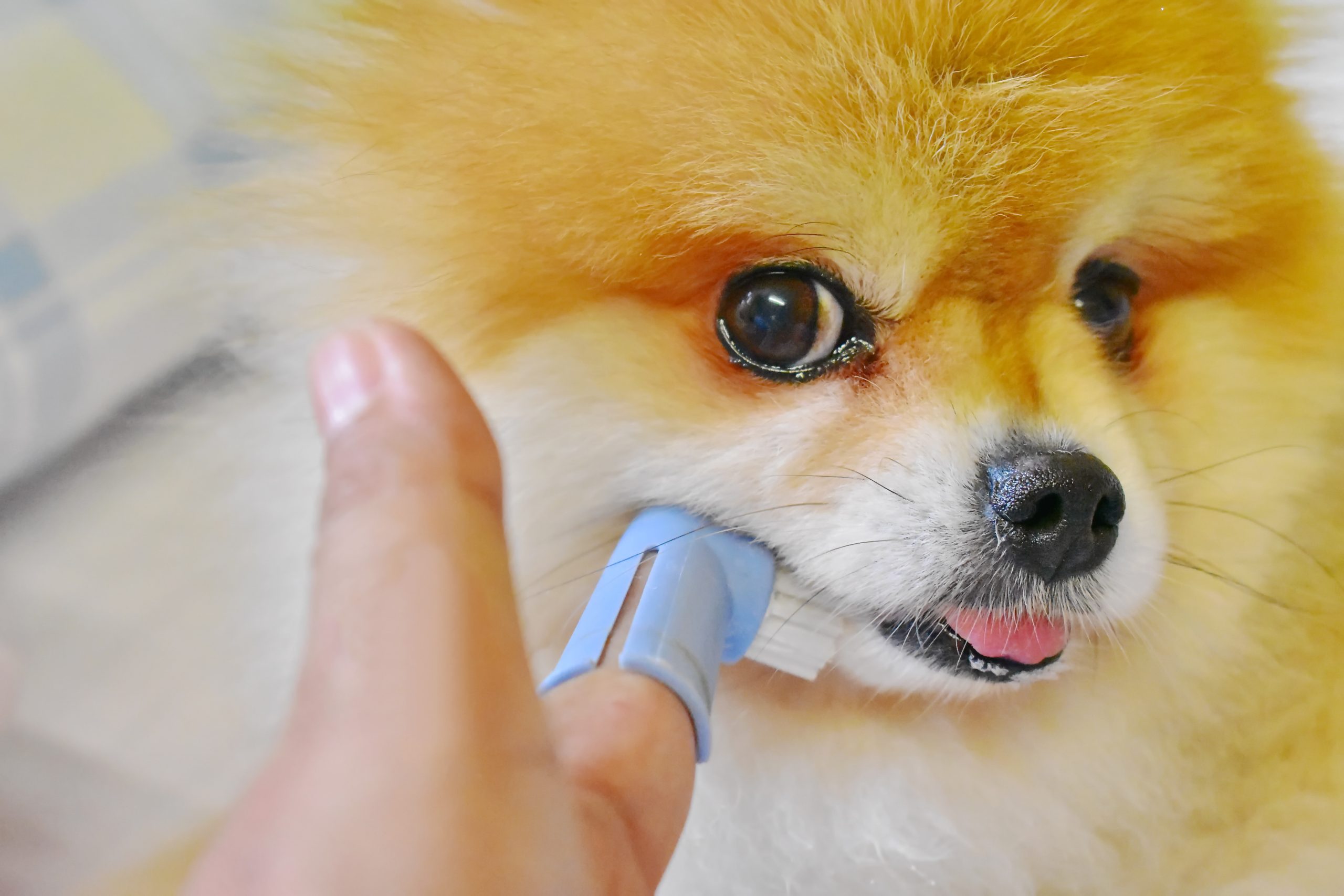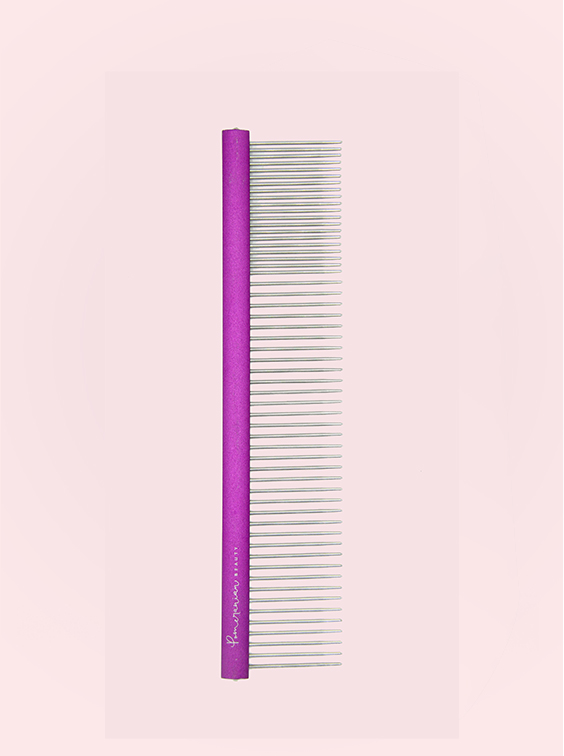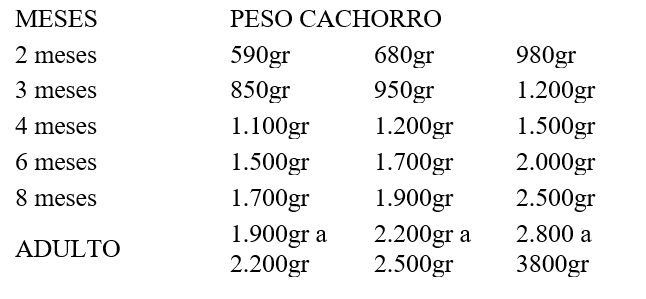The Pomeranian is descended from the Spitz, the official name of the breed is the German Spitz, and within the breed there are five sizes or varieties, among which is the dwarf German Spitz (zwergspitz) or Pomeranian which is the smallest of all varieties. The breed owes its name to a region between Germany and Poland called Pomerania. In ancient times the size of the Pomeranian was much larger and they were used as sled dogs and cattle herding dogs. Although it is a German breed, it is said to have been popularized by the British Royal family in the 18th century.
Its appearance and size has been changing since then until now by the selection of breeders, to acquire a smaller and rounder appearance to become a herding dog, a beautiful small dog perfect for company but still retains some of its primitive character that makes it so bold.
I would like to clarify this subject that creates so much confusion and that often the information we find on the internet is erroneous.
The Pomeranian comes from the German Spitz, being this the smallest variety of this breed. So do not be scared when you read in the pedigree the German Spitz (Zwergspitz) because this is the name of the breed. Many people are confused or distrustful because they think they have acquired a Pomeranian and not a Spitz. But we have to know that the breed is the German Spitz.
That means Zwergspitz which comes from German and means dwarf Spitz, the smallest of all Spitz.
Dwarf German Spitz or POMERANIA, and within the Pomeranian what types are there?
Pomeranian toy, Pomeranian lulu, Pomeranian boo, Pomeranian lulu, Pomeranian teacup... and I could go on these are just some of the names that people use to name the Pomeranian according to its size or appearance.
Well, there are no types of Pomeranians, they are just popular names and they change according to the fashion... for example Pomeranian Boo which has been heard since the last 10 years. And later we will explain you what is the Pomeranian Boo type.
There is no such thing as a Pomeranian toy or micro toy or teacup... there are smaller or bigger Pomeranians... just like in humans, taller or shorter...
So how do you know if it is a Pomeranian?
According to the FCI standard (Fédération Cynologique Internationale)
It measures between 18cm to 22 cm at the withers.
And the AKC (American Kennel Club) Standard.
I personally see much more sense in it, after having been breeding this wonderful breed for more than 15 years, and knowing it to perfection.
The AKC tells us:
"The average size of the Pomeranian is from 3 to 7 pounds, with the ideal weight for the show specimen being 4 to 6 pounds. Any dog over or under the limits is objectionable. However, overall quality is to be favored over the size. (...)"
And here is the Spanish translation:
"The average size Pomeranian ranges from 3 to 7 pounds (1'5 kg to 3'5 kg), with the ideal weight for show Pomeranians being between 4 and 6 pounds ( 1'8 kg to 2'8kg ). Any dog above or below the limit is questionable. However, more importance will be placed on the overall quality of the dog than on size."
Here the most important thing is the quality and not the size. A Pomeranian with an abundant coat, small ears, a nice and friendly face will always be beautiful even if it weighs 4 kilos and not 1.5 kilos. Let's value quality and love the breed within its standard, without asking for impossible things, for example dogs under 1 kilo.
With this I want to clarify that there are no TYPES OF POMERANIA, it is the same dog that goes from a weight of 1.5 to 3.5 kg approximately.
But why is there so much difference from one to the other... in their appearance?
Now then, let's talk about BLOOD LINES.
Why are some pomeranias more foxy and others more bear-like? Or with chubbier legs and others with taller legs? Or with more or less hair...
This depends on the bloodline. And on the genetics behind your Pomeranian.
This has to do with the evolution of the breed, as breeders have been evolving the breed. And that is why there are pomeranians that have a more primitive appearance as the breed was in ancient times with the appearance of the Spitz, and others more evolved, with a more abundant hair, shorter muzzle, smaller and rounder ear and paws with more hair that makes a more rounded overall appearance.
One of the reasons that makes the Pomeranian breed so special is the colors of the Pomeranian. Just as the Pomeranian's coat is so spectacular, the diversity of its colors makes the Pomeranian one of the most desirable breeds.
The Pomeranian is beautiful in all its colors, but it is true that everyone tends to have their preferences ... What is your favorite color of Pomeranian?
The colors of the Pomeranian are divided into:
Solids: Orange, red, white, black, black and tan, chocolate, cream, Wolf sable, merle
Particolors: A predominantly white coat with other solid colors such as orange, black, parti black and tan, and more.
Do you know all the colors of the Pomeranian?
Color change in the Pomeranian puppy to adult:
White pomeranias, black, chocolate, and black and tan pomeranias do not change color from puppy to adult.
Something different happens with some orange, red and cream pomeranias. Many puppies are greyish with some orange parts, and this color changes to a more or less intense orange or red. This change is usually done with the first molt of the Pomeranian.
*Same puppy with 2 months and 10 months respectively, where you can see the color change.
There are puppies that are born cream and as adults they are also orange, if that is one of the characteristics that makes the Pomeranian so special. They surprise you with their color change.
For a cream Pomeranian puppy to be this color as an adult, it has to be a cream almost white, and in this case it will be cream.
There are also very light gray puppies, which in Pomeranian adukto will be cream.
The size in the Pomeranian can vary according to the standard of each country. We are going to focus on the American Pomeranian standard. Moreover, since a few years ago, the American line Pomeranians are the most desired, so if we want to acquire an American line Pomeranian, we must stick to their standard.
Here we have collected the part of the standard where they talk about the size, you can read the complete standard in this link http://www.americanpomeranianclub.org/standard.htm
"The average size of the Pomeranian is from 3 to 7 pounds, with the ideal weight for the show specimen being 4 to 6 pounds. Any dog over or under the limits is objectionable. However, overall quality is to be favored over the size. (...)"
Quote from the official website of the american pomeranian club
And here is the Spanish translation:
"The average size Pomeranian ranges from 3 to 7 pounds (1'5 kg to 3'5 kg), with the ideal weight for show Pomeranians being between 4 and 6 pounds ( 1'8 kg to 2'8kg ). Any dog above or below the limit is questionable. However, more importance will be placed on the overall quality of the dog than on size."
Pomeranian Growth Chart
| MONTHS | PUPPY WEIGHT | ||
| 2 months | 590gr | 680gr | 980gr |
| 3 months | 850gr | 950gr | 1,200gr |
| 4 months | 1,100gr | 1,200gr | 1,500gr |
| 6 months | 1,500gr | 1,700gr | 2,000gr |
| 8 months | 1,700gr | 1,900gr | 2,500gr |
| ADULT | 1,900gr to 2,200gr | 2,200gr to 2,500gr | 2,800 to 3800gr |
The weight is a guideline, and varies according to each puppy. Enjoy your puppy no matter the weight. The Pomeranian is characterized by more factors such as its coat, its features ... and I am convinced that your Pomeranian is the KING or QUEEN of your home.
Pomeranian hair is the most beautiful and characteristic of the Pomeranian breed, but it is also its protection. It is what protects his delicate skin from the sun, the heat and many other factors. Do not cut it in summer, you will be leaving him naked before a very dangerous sun. His fur is his sunscreen, his fan and many advantages in the hot summer months.
Pomeranian haircuts recommended and not recommended, read on and learn how to care for your Pomeranian, and what is the best Pomeranian haircut.
NATURAL CUTTING
The most recommended one, a subtle tip cut that gives a rounded but natural look. It will look like a little ball but without risk to the health of your hair and skin.
*Natural haircut with a slightly rounded ends.
EXHIBITION CUT
Recommended but with rest. This type of cut can be done, although we recommend resting the hair between cuts. To let the hair continue to grow strongly.
*Corte pomeranian showroom
BOO OR POMERANIAN BOO CUT
Not recommended. In my experience I do not recommend this type of cut in the Pomeranian and we do not do it in our hairdressing salon pets & poms. Due to the high percentage of suffering alopecia in the Pomeranian.
This information about molting in Pomeranians will be very useful for those who have or are thinking of getting a Pomeranian puppy.
The Pomeranian is one of the most beautiful puppies of all dog breeds. At the age of two months they look like a little ball, all furry and among so much hair, a beautiful face that steals your heart in just a second.
That fluffy hair and color change.
At what age does a Pomeranian molt/change its coat?
All pomeranians will change their hair from puppy to adult, between 4 and 6 months of age, the pomeranian molt will begin, depending on the specimen will start earlier or later.
The color also changes considerably, from two months to the color they will later have as adults.
When the change of hair in the Pomeranian begins, they begin to lose the hair, they begin to remove the hair of the face and they get a cute face, as we usually say. The paws are getting higher because of the hair loss. And they are pulling the wool to give way to a stronger hair.
It is a natural stage that everyone has to go through, but do not be alarmed! After a few months the adult hair will be appearing and they will regain their rounded appearance.
How to help the shedding of hair in the Pomeranian?
Daily brushing is essential to help and promote hair growth, the use of a conditioning spray and the action of the brush helps the hair to moult faster. It is also advisable to bathe them frequently during the moulting season to help them shed their puppy hair and allow the adult hair to come out.
How long does the Pomeranian molt last?
The moulting usually lasts 3 months approximately, from 5 to 8 months approximately. From 8 months the hair is already of adult, but they will continue to be filled with hair until 3 years which is when the Pomeranian has evolved completely and we can say that it already has all its adult hair.
At that age they are simply spectacular.
Examples of molting in the Pomeranian / hair change in the Pomeranian Photos:
*Pomeranian puppy two months old
*Pomeranian puppy 5 months old
*Pomeranian puppy 7 months old
*Pomeranian 1 year
*Pomeranian 2 years
* Pomeranian 3 years
*Male Pomeranian 2 months, 5 months, 10 months and 3 years and a half respectively.
*Pomeranian female 2 months, 4 months and 4 years respectively.
*Female 5 months and 3 and a half years old respectively.
First year molting
At about one year of age, almost all Pomeranias molt again, some as hard or harder than the puppy molt. They lose their wool again and are left with a thinner and straighter coat. Some Pomeranias keep their wool or do not shed as heavily. Others have parts with volume and others that do not have so much volume. It is normal, the part that takes the longest to fill out is the head and ears.
When the new hair comes out, it is a stronger and harder hair and at the beginning, because of the lack of wool, it comes out flattened. That is why many of them have a carving in the middle, it is normal as it grows and the wool will take body and volume.
Also when the new hair appears it is usually of a much more intense color in the case of the orange and red Pomeranians.
A Pomeranian with one year old, it is totally normal that it does not look like a little ball, it is totally normal and natural.
It is necessary to give them time to recover their hair and to look again like a real pompom!
The coat they will have as adults is determined by their genetics, no matter if they have had a more or less strong shedding.
The Pomeranian has a cheerful, extroverted, affectionate character... The Pomeranian breed is characterized by being alert so it is a good guardian of its home. He usually chooses one member of the family as his "favorite person" even if he is affectionate with everyone.
Choosing a good breeder when buying a Pomeranian puppy is essential. And it is just as important to select for beauty as for Pomeranian character. Character is also inherited. So looking at the character of the parents can help you predict what your puppy will be like, although it doesn't always have to come from the parents, but it helps a lot.
Pomeranian diseases:
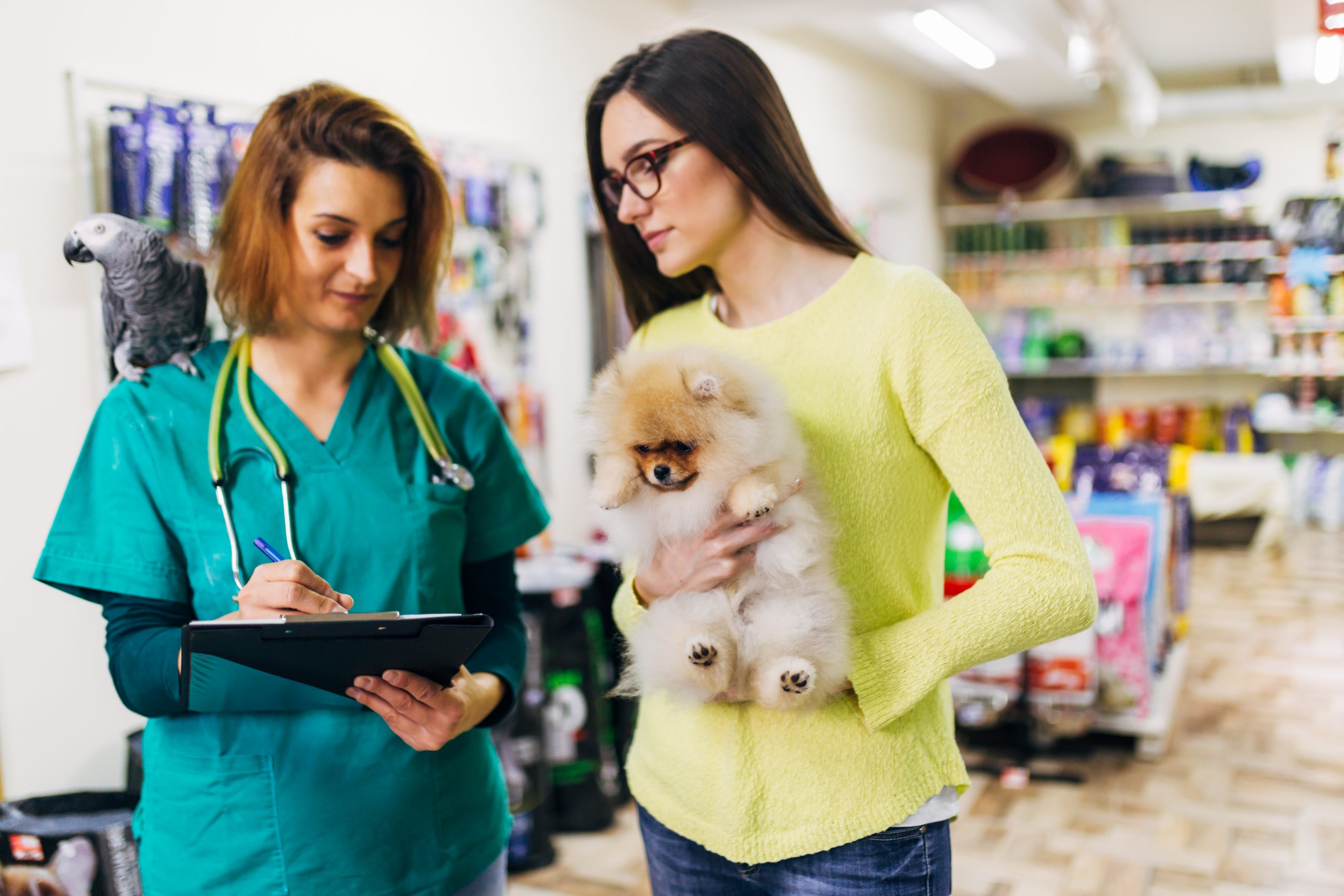 Despite its small size, the Pomeranian is a fairly healthy and strong breed, although it is true that there are some diseases typical of the Pomeranian breed.
Despite its small size, the Pomeranian is a fairly healthy and strong breed, although it is true that there are some diseases typical of the Pomeranian breed.
POMERANIAN PATELLA LUXATION VERY TYPICAL IN SMALL BREEDS.
It usually appears in the growth phase, around 6 to 9 months of age. Although it can appear at any age. It is characterized because every three or four steps he limps on one leg and walks like jumping. It can happen in one or both hind legs. And there are different degrees. Generally it occurs in mild degrees. Although it can occur in very advanced degrees and have to be operated.
In mild cases and as soon as you notice that your Pomeranian starts with dislocation, we recommend homeopathy. In particular Ruta Graveolens at 9 ch. 3 pellets 3 times a day for about 3 months.
We have been using this on our puppies for over 15 years, and the results have been very satisfactory. We have never had to operate on any of our pomeranians for patellar luxation.
POMERANIAN TRACHEAL COLLAPSE
Also common in small breeds is a narrowing of the trachea, which sometimes in combination with an overly flat Pomeranian can cause breathing difficulties.
Our recommendation is to keep your Pomeranian always in its optimal weight, even more if it suffers from a respiratory disease. Pomeranians that are kept in their weight breathe much better.
Consult your veterinarian there are measures and operations that can help a lot in some cases of tracheal collapse in the Pomeranian.
ALOPECIA X IN THE POMERANIAN
Visit our article on alopecia in the Pomeranian or black skin desease
Life expectancy in Pomeranians is usually up to 12 to 14 years. Small breeds are longer-lived than large breeds. Some specimens can even last up to 18 years, being this the most exceptional cases. And also have a slightly shorter life expectancy.
Taking good care of your Pomeranian will extend its life expectancy.
The first thing that Pomeranian owners ask themselves when they get a Pomeranian puppy is how to take care of it. We are going to give you some advice from a breeder's point of view that will be very useful to take care of your Pomeranian.
First and foremost, food and water must be available.
Place a water dish that is comfortable for the puppy and adapted to its size. It should be easy for him to drink from and should be non-slip, so that it does not slip and frighten him.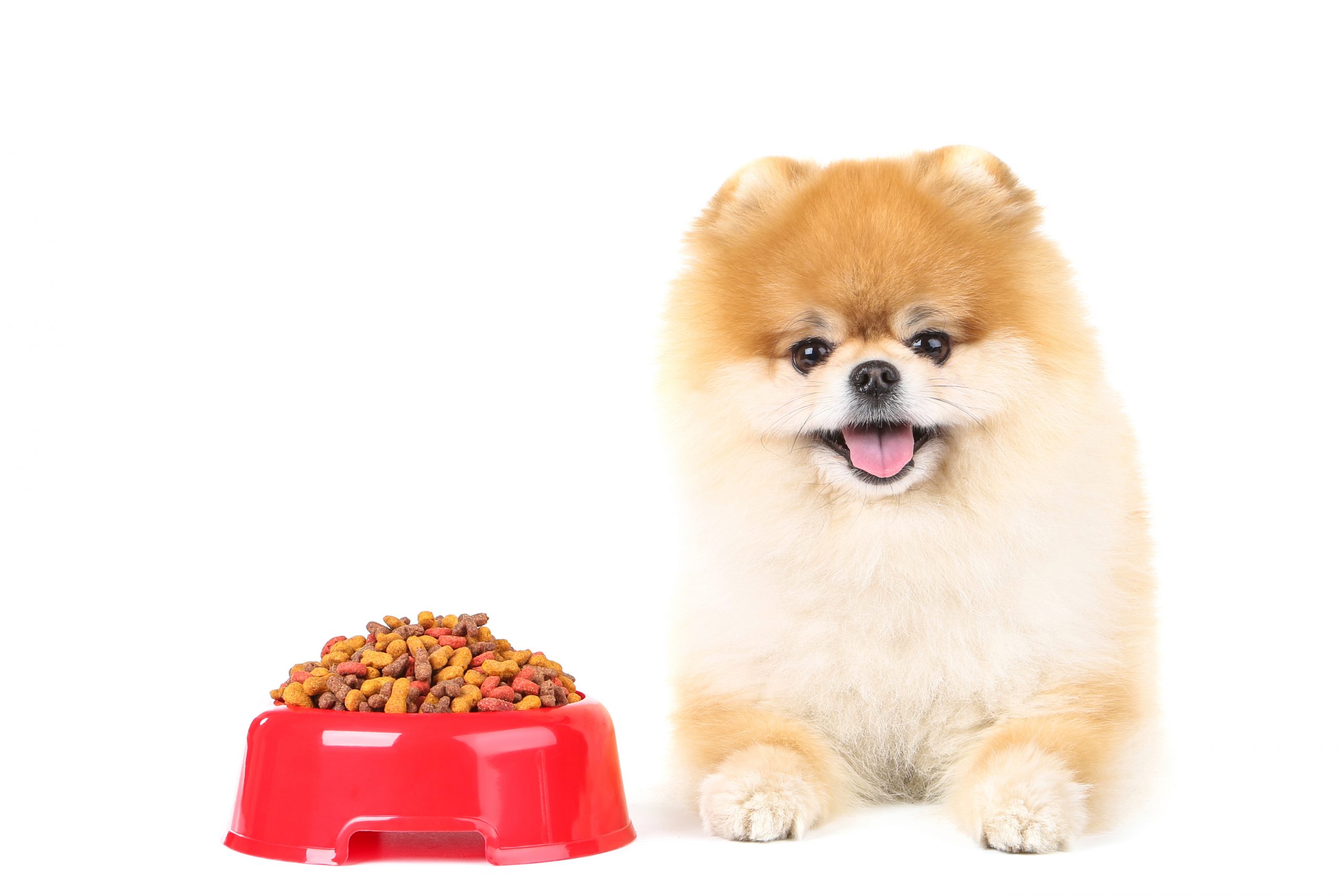
Place a water dish that is comfortable for the puppy and adapted to its size. It should be easy for him to drink from and should be non-slip, so that it does not slip and frighten him.
In a part of the house where you spend the most time. Fresh water always available. Check the water every day.
Food, talk to the Pomeranian's breeder to inform you which food he is eating and do not change it. A change of food can cause diarrhea, and this in a puppy can be serious. Follow the first weeks the same Pomeranian food that the breeder told you and if you want to change it, make a progressive change, never all at once.
To watch that every day your Pomeranian puppy eats all its ration, which will indicate the grams on the food bag. Make sure that he eats all or almost all of it. He can leave a little, but not half of the ration. This is very important because of hypoglycemia in the Pomeranian. If he does not eat feed in several hours, try to give him a soft food like baby food of rice with chicken. But he must eat something. The Pomeranian puppy should eat three times a day. Or leave him all day long the food if we do not have another dog.
Watch for low blood sugar in the Pomeranian or hypoglycemia (more on this below).
Decide where our Pomeranian is going to do his needs.
How to educate Pomeranians to pee in the street
If it will be in the street, then we will have to take him out several times a day to give him the opportunity to do it in the street.
Be patient, some take time and others learn very quickly. It is important to be attentive the first days, it would be good if you take a few days off work for the arrival of the puppy. You will help him to adapt and keep a close eye on him during these first days.
How to educate Pomeranians to pee in the potty
You can also choose to have him do his needs at home on a newspaper or underpad. How to educate a Pomeranian, is simple and repetitive. Generally everyone learns sooner or later, you just have to be constant, nothing is achieved without effort.
A very good trick that I always recommend, when a Pomeranian puppy wakes up he almost always pees, well as soon as he wakes up don't take his eye off him, start doing your business but looking at him out of the corner of your eye, and when he pees at the same moment you tell him ¨NO¨ and you take him to the newspaper or soaker. For me that is the most effective and what has worked for me with all my pomeranians. When he goes to the soaker and does his needs you tell him ¨very good¨ and you are very happy and proud. And if you also give him a treat you will help him to know that this is what is expected of him, and a dog likes nothing better than to please his owners and feel flattered and loved. If you repeat this several days it will be a success. But it is important that you catch him off guard, so the first few days you will have to be more vigilant.
Whether or not he does his needs in the street, the walk is highly recommended for a correct socialization. When he has not yet had all his vaccinations, it is good to take him out in your arms so that he gets used to the street, noises and people. Do not wait too long to take him out or he may have a socialization problem. But if your Pomeranian is not vaccinated, always in arms. Once he is fully vaccinated, he can go out on a leash, at the beginning he will itch the leash and will not want to walk, don't be scared, it is normal, in a few days he will love it.
Pomeranian Vaccines, HOW TO PREPARE THE PUPPY
This is an issue that you should discuss with the breeder and contrast with the veterinarian. In each country there is a different vaccination schedule. But preparing your Pomeranian puppy will make him stronger against vaccinations. Wait a week since you pick up the Pomeranian, this week is called adaptation week and it can have a lowering of defenses. (If there is no urgency, avoid taking him to the vet before, in case of urgency or doubt, go to your vet) Also avoid stressful situations, to avoid lowering his defenses. Do not bathe him during the first week he arrives home. Nor recently vaccinated.
Echinacea works very well to raise defenses before vaccination.
When to start brushing the Pomeranian?
From the first day you have to start your beauty routine. A few days before, get the right brushing tools. A butter brush or Pomeranian brush made of wood and flexible bristles without small balls at the tip.
A good metal comb for Pomeranian. And with a good grip to detangle perfectly from root to tip. The hair of the Pomeranian is very prone to clumping, get a good comb and you will always be grateful for it.
Card for Pomeranian, without balls at the tip. For paws, ears and very cottony dogs.
AND LASTLY and very important a good conditioner spray for pomeranian, to keep their hair in perfect conditions, the pomeranians that are brushed daily with spray have a more beautiful and abundant hair than the ones that are hardly brushed between baths.
The ideal and recommended is to do it daily, you activate the blood circulation and with it the natural growth of the hair, you moisturize them so that the hair does not break, and you avoid that they catch bad smell. In addition a good brushing is the best natural antiparasitic, you will check every day that they have no fleas or ticks. All are advantages. In addition you check the general condition of the skin.
It starts very little time for them to get used to the table, to be still and relaxed and to the brush and comb. Everything is new to them. Every day as the exercise is positive, increase the time. Always finish the exercise in a positive way, do not put him down on the floor if he reveals himself, put him down when he is in a calm and relaxed attitude, and always reward him when you finish with lots of love and a treat.
Bathing the Pomeranian can be started as early as two months of age and the frequency of bathing should be every three weeks.
In the market there are many feeds, different feeds and even pineso for Pomeranians. Feed is the most comfortable option and every time there are healthier recipes for Pomeranian feeding. But in my experience it is much better to feed a natural Barf diet for Pomeranians. There are many brands that already sell them prepared.
It is based on a diet of raw meat, vegetables, crushed bones
With all the nutrients a Pomeranian needs. The health of the skin and the instestine are considerably improved and they have a more abundant and shiny coat.
But for this type of diet, it is necessary to dedicate a little time to get good advice, or buy a brand where we get everything done, to avoid missing something in the diet.
Here you will find tips to help you find the Pomeranian puppy of your dreams.
Choosing the puppy of your dreams
First of all the acquisition of a Pomeranian puppy has to be a meditated decision. A Pomeranian lives from 12 to 14 years, and we have to be sure that we will be able to give him the best care all this time.
If the answer is yes, keep reading this is of interest to you.
The first thing is to look for breeders specialized in the Pomeranian breed. Breeders in a family environment, with a reduced number of dogs, and who look for health first and beauty.
Feel free to ask the breeder, all aspects about the breed. In a conversation you can feel if he is an experienced breeder or not. And especially if he transmits you confidence.
The ideal is to be able to see the parents in person. If possible, it is recommended that you travel to the breeder. Even if it is a long trip, it will always be worth it to meet your puppy's family.
The pedigree, does it guarantee everything? The pedigree of a Pomeranian tells you about his family tree, his ancestry. But probably if you are not a breeder you will not know any of the dogs that appear on that sheet. The pedigree is very important if you know the bloodlines, if you know the dogs that appear in it, but really believe me that it does not guarantee you if your Pomeranian, will be healthy, big, small, hairy or not... Having pedigree is not always synonymous of quality.
So the pedigree is a plus, but it is not everything, do not trust or distrust for this reason.
The confidence is given to you by the breeder, with his experience, years with the breed, knowledge that he will not hesitate to share with you, in fact he will be proud of it. If he participates in shows it can be another incentive. Although not a determining factor.
Size or quality? Most people focus on size and yes it is important but what is really important is that it is of quality true to the breed, abundant double coat hair, small ears, almond-shaped eyes, small muzzle ... and above all healthy.
Seeing the parents will give you a rough idea of the quality of your puppy, and the size. Although honestly from small parents sometimes bigger puppies are born and vice versa. But if you have chosen a good breeder, it won't matter if your Pomeranian weighs 2 or 4 kilos, the quality and beauty will be the same whatever the size is. A beautiful and healthy Pomeranian stands out wherever he goes.
And last but not least, read, inform yourself and look at many pictures to familiarize yourself with the breed. At first they may all look the same, but I assure you that as you look you will realize the differences of a true to breed Pomeranian puppy.
And he values the work of the breeder, who takes care of the breed, who loves his dogs, and cares about giving him the best 365 days a year. A serious, responsible breeder and lover of the breed. He has a precious work but also sacrificed. It is a job that does not understand weekends or holidays and also does not understand schedules. Nor vacations, dogs always need your care. So the value of the Pomeranian, may seem excessive, but really there are many factors to take into account in the price of a puppy.
Flee from puppy factories, which sell cheap, and mistreat pomeranians to get a large number of puppies. Buy only from breeders or people who love the breed.
And think that you can always adopt a Pomeranian or any dog that needs your help. There are many dogs that need us.
Buy or adopt feel free, and proud of your decision. Responsible dog breeding is a wonderful profession and no one should discriminate against it.
And whatever you do, never give up. There are other options if you can't take care of your dog. Always treat him with love, as you would like to be treated yourself.
Hypoglycemia in puppies or commonly called low glucose or low blood sugar in the Pomeranian,
It can occur at any age but it is more common in puppies. It is not very frequent in the Pomeranian breed, but it happens, and it is important to know how to detect it in order to act quickly, acting well and fast will save their lives.
Hypoglycemia can lead to the death of the puppy.
The best way to avoid this is to be very attentive and watch that our puppy is eating all his ration in each feeding. If in one feeding he doesn't eat we can wait for the next one, but if in the next one he doesn't show interest in the food we should make him eat something. Whether it is wet food, or baby food of rice with chicken, always something very soft so that it does not affect his tummy.
How to detect hypoglycemia in the Pomeranian. The first days are useful to know your puppy and to know what is his normal activity. If your puppy is very apathetic and does not want to play, he sleeps a lot, it can be a symptom of hypoglycemia. If in doubt it is better to give them a little honey, it is more effective and faster than sugar water. It is advisable since we have the puppy to have honey at home. If we don't have it, then whatever we have, a sweetened yogurt, water with sugar... But honey is quite fast and effective. We have to notice that the puppy changes in one or two minutes, he looks more cheerful, happy and awake. If the state of decay continues we must go quickly to the vet.
Always carry single-dose honey or a sachet of sugar in your bag. It can happen when you are away from home.
They also work very well with nutriplus gel type pastes for puppies, which besides glucose has vitamins. And you can carry it in your purse.
They can be bathed at two months of age, even earlier, and can be bathed without being vaccinated, always with great care as with a baby.
The vaccines and the bath have nothing to do, the vaccines protect him against a virus. In the bath we must be careful that he does not catch cold, putting the warm water warm and avoiding that there are currents in the bath.
We will use a soft shampoo suitable for puppies. The ideal if it is a two months old puppy is to use the intensive repair line to moisturize but we can also use the voluminous pom line if it has little undercoat. If the puppy is 4 or 5 months old, which will already be in molt, we will use the line that best suits him according to his coat type.
Try to make it a calm and positive experience. Familiarize him with water without scaring him, try with a small basin so he doesn't run away and wet him with a dipper, so as not to scare him at first with the shower.
Give it only one soaping and always remove the soap very well.
Always use a mask, especially for puppies, which have new skin that must be protected.
Bathe him every three weeks. Dry the hair with a hair dryer until it is completely dry, at the same time brush it with a butter brush and always finish with a good comb that untangles from the roots to the ends.
Before your Pomeranian arrives home you will need the puppy essentials pack to keep your Pomeranian's coat in perfect condition and always looking wow!
It can and should be started from puppyhood. Buy a toothbrush for Pomeranians and a toothpaste for dogs. There are many models of toothbrushes, look for a small one for his mouth.
You can do it daily or weekly. I think weekly would be enough, the important thing is to create a habit and not abandon it. Pomeranians generate a lot of tartar, and if you don't do a correct cleaning of the mouth you will have to do it at the vet's office and you will need sedation.
It is important to clean teeth in the Pomeranian. You will avoid the fall of teeth that is very typical in the Pomeranian breed.
For the correct brushing of the Pomeranian you will need three brushes and a good conditioning spray.
Butter brush
Preferably made of wood to avoid static electricity, with flexible metal blades without balls at the tip.
The butter brush is the first brush we will use to open the hair layer by layer against the hair.
Comb
A good metal comb for Pomeranian. And with a good grip to detangle perfectly from root to tip. The hair of the Pomeranian is very prone to caking, get a good comb and you will always be grateful for it.
Once we have brushed the hair perfectly with the brush we pass the comb to make sure that there are no knots and that the wool does not clump. It serves to give volume.
Card
Made of wood or plastic with metal tips. Soft so as not to damage the skin. We will use it for the paws and ears and for very cottony dogs.
Before brushing the Pomeranian always use a good conditioning spray to moisturize the hair and that it does not break with brushing, prevents the appearance of knots, favors the natural growth of the hair and leaves an incredible smell. It is proven that Pomeranians who brush daily with moisturizer have a more abundant coat and look much more beautiful and shiny.
The Pomeranian is descended from the Spitz, the official name of the breed is the German Spitz, and within the breed there are five sizes or varieties, among which is the dwarf German Spitz (zwergspitz) or Pomeranian which is the smallest of all varieties. The breed owes its name to a region between Germany and Poland called Pomerania. In ancient times the size of the Pomeranian was much larger and they were used as sled dogs and cattle herding dogs. Although it is a German breed, it is said to have been popularized by the British Royal family in the 18th century.
Its appearance and size has been changing since then until now by the selection of breeders, to acquire a smaller and rounder appearance to become a herding dog, a beautiful small dog perfect for company but still retains some of its primitive character that makes it so bold.
I would like to clarify this subject that creates so much confusion and that often the information we find on the internet is erroneous.
The Pomeranian comes from the German Spitz, being this the smallest variety of this breed. So do not be scared when you read in the pedigree the German Spitz (Zwergspitz) because this is the name of the breed. Many people are confused or distrustful because they think they have acquired a Pomeranian and not a Spitz. But we have to know that the breed is the German Spitz.
That means Zwergspitz which comes from German and means dwarf Spitz, the smallest of all Spitz.
Dwarf German Spitz or POMERANIA, and within the Pomeranian what types are there?
Pomeranian toy, Pomeranian lulu, Pomeranian boo, Pomeranian lulu, Pomeranian teacup... and I could go on these are just some of the names that people use to name the Pomeranian according to its size or appearance.
Well, there are no types of Pomeranians, they are just popular names and they change according to the fashion... for example Pomeranian Boo which has been heard since the last 10 years. And later we will explain you what is the Pomeranian Boo type.
There is no such thing as a Pomeranian toy or micro toy or teacup... there are smaller or bigger Pomeranians... just like in humans, taller or shorter...
So how do you know if it is a Pomeranian?
According to the FCI standard (Fédération Cynologique Internationale)
It measures between 18cm to 22 cm at the withers.
And the AKC (American Kennel Club) Standard.
I personally see much more sense in it, after having been breeding this wonderful breed for more than 15 years, and knowing it to perfection.
The AKC tells us:
"The average size of the Pomeranian is from 3 to 7 pounds, with the ideal weight for the show specimen being 4 to 6 pounds. Any dog over or under the limits is objectionable. However, overall quality is to be favored over the size. (...)"
And here is the Spanish translation:
"The average size Pomeranian ranges from 3 to 7 pounds (1'5 kg to 3'5 kg), with the ideal weight for show Pomeranians being between 4 and 6 pounds ( 1'8 kg to 2'8kg ). Any dog above or below the limit is questionable. However, more importance will be placed on the overall quality of the dog than on size."
Here the most important thing is the quality and not the size. A Pomeranian with an abundant coat, small ears, a nice and friendly face will always be beautiful even if it weighs 4 kilos and not 1.5 kilos. Let's value quality and love the breed within its standard, without asking for impossible things, for example dogs under 1 kilo.
With this I want to clarify that there are no TYPES OF POMERANIA, it is the same dog that goes from a weight of 1.5 to 3.5 kg approximately.
But why is there so much difference from one to the other... in their appearance?
Now then, let's talk about BLOOD LINES.
Why are some pomeranias more foxy and others more bear-like? Or with chubbier legs and others with taller legs? Or with more or less hair...
This depends on the bloodline. And on the genetics behind your Pomeranian.
This has to do with the evolution of the breed, as breeders have been evolving the breed. And that is why there are pomeranians that have a more primitive appearance as the breed was in ancient times with the appearance of the Spitz, and others more evolved, with a more abundant hair, shorter muzzle, smaller and rounder ear and paws with more hair that makes a more rounded overall appearance.
One of the reasons that makes the Pomeranian breed so special is the colors of the Pomeranian. Just as the Pomeranian's coat is so spectacular, the diversity of its colors makes the Pomeranian one of the most desirable breeds.
The Pomeranian is beautiful in all its colors, but it is true that everyone tends to have their preferences ... What is your favorite color of Pomeranian?
The colors of the Pomeranian are divided into:
Solids: Orange, red, white, black, black and tan, chocolate, cream, Wolf sable, merle
Particolors: A predominantly white coat with other solid colors such as orange, black, parti black and tan, and more.
Do you know all the colors of the Pomeranian?
Color change in the Pomeranian puppy to adult:
White pomeranias, black, chocolate, and black and tan pomeranias do not change color from puppy to adult.
Something different happens with some orange, red and cream pomeranias. Many puppies are greyish with some orange parts, and this color changes to a more or less intense orange or red. This change is usually done with the first molt of the Pomeranian.
*Same puppy with 2 months and 10 months respectively, where you can see the color change.
There are puppies that are born cream and as adults they are also orange, if that is one of the characteristics that makes the Pomeranian so special. They surprise you with their color change.
For a cream Pomeranian puppy to be this color as an adult, it has to be a cream almost white, and in this case it will be cream.
There are also very light gray puppies, which in Pomeranian adukto will be cream.
The size in the Pomeranian can vary according to the standard of each country. We are going to focus on the American Pomeranian standard. Moreover, since a few years ago, the American line Pomeranians are the most desired, so if we want to acquire an American line Pomeranian, we must stick to their standard.
Here we have collected the part of the standard where they talk about the size, you can read the complete standard in this link.
"The average size of the Pomeranian is from 3 to 7 pounds, with the ideal weight for the show specimen being 4 to 6 pounds. Any dog over or under the limits is objectionable. However, overall quality is to be favored over the size. (...)"
Quote from the official website of the american pomeranian club
And here is the Spanish translation:
"The average size Pomeranian ranges from 3 to 7 pounds (1'5 kg to 3'5 kg), with the ideal weight for show Pomeranians being between 4 and 6 pounds ( 1'8 kg to 2'8kg ). Any dog above or below the limit is questionable. However, more importance will be placed on the overall quality of the dog than on size."
Pomeranian growth chart.
The weight is a guideline, and varies according to each puppy. Enjoy your puppy no matter the weight. The Pomeranian is characterized by more factors such as its coat, its features ... and I am convinced that your Pomeranian is the KING or QUEEN of your home.
Here we have collected the part of the standard where they talk about the size, you can read the complete standard at this link
Pomeranian hair is the most beautiful and characteristic of the Pomeranian breed, but it is also its protection. It is what protects his delicate skin from the sun, the heat and many other factors. Do not cut it in summer, you will be leaving him naked before a very dangerous sun. His fur is his sunscreen, his fan and many advantages in the hot summer months.
Pomeranian haircuts recommended and not recommended, read on and learn how to care for your Pomeranian, and what is the best Pomeranian haircut.
NATURAL CUTTING
The most recommended one, a subtle tip cut that gives a rounded but natural look. It will look like a little ball but without risk to the health of your hair and skin.
*Natural haircut with a slightly rounded ends.
EXHIBITION CUT
Recommended but with rest. This type of cut can be done, although we recommend resting the hair between cuts. To let the hair continue to grow strongly.
*Corte pomeranian showroom
BOO OR POMERANIAN BOO CUT
Not recommended. In my experience I do not recommend this type of cut in the Pomeranian and we do not do it in our hairdressing salon pets & poms. Due to the high percentage of suffering alopecia in the Pomeranian.
This information about molting in Pomeranians will be very useful for those who have or are thinking of getting a Pomeranian puppy.
The Pomeranian is one of the most beautiful puppies of all dog breeds. At the age of two months they look like a little ball, all furry and among so much hair, a beautiful face that steals your heart in just a second.
That fluffy hair and color change.
At what age does a Pomeranian molt/change its coat?
All pomeranians will change their hair from puppy to adult, between 4 and 6 months of age, the pomeranian molt will begin, depending on the specimen will start earlier or later.
The color also changes considerably, from two months to the color they will later have as adults.
When the change of hair in the Pomeranian begins, they begin to lose the hair, they begin to remove the hair of the face and they get a cute face, as we usually say. The paws are getting higher because of the hair loss. And they are pulling the wool to give way to a stronger hair.
It is a natural stage that everyone has to go through, but do not be alarmed! After a few months the adult hair will be appearing and they will regain their rounded appearance.
How to help the shedding of hair in the Pomeranian?
Daily brushing is essential to help and promote hair growth, the use of a conditioning spray and the action of the brush helps the hair to moult faster. It is also advisable to bathe them frequently during the moulting season to help them shed their puppy hair and allow the adult hair to come out.
How long does the Pomeranian molt last?
The moulting usually lasts 3 months approximately, from 5 to 8 months approximately. From 8 months the hair is already of adult, but they will continue to be filled with hair until 3 years which is when the Pomeranian has evolved completely and we can say that it already has all its adult hair.
At that age they are simply spectacular.
Examples of molting in the Pomeranian / hair change in the Pomeranian Photos:
*Pomeranian puppy two months old
*Pomeranian puppy 5 months old
*Pomeranian puppy 7 months old
*Pomeranian 1 year
*Pomeranian 2 years
* Pomeranian 3 years
*Male Pomeranian 2 months, 5 months, 10 months and 3 years and a half respectively.
*Pomeranian female 2 months, 4 months and 4 years respectively.
*Female 5 months and 3 and a half years old respectively.
First year molting
At about one year of age, almost all Pomeranias molt again, some as hard or harder than the puppy molt. They lose their wool again and are left with a thinner and straighter coat. Some Pomeranias keep their wool or do not shed as heavily. Others have parts with volume and others that do not have so much volume. It is normal, the part that takes the longest to fill out is the head and ears.
When the new hair comes out, it is a stronger and harder hair and at the beginning, because of the lack of wool, it comes out flattened. That is why many of them have a carving in the middle, it is normal as it grows and the wool will take body and volume.
Also when the new hair appears it is usually of a much more intense color in the case of the orange and red Pomeranians.
A Pomeranian with one year old, it is totally normal that it does not look like a little ball, it is totally normal and natural.
It is necessary to give them time to recover their hair and to look again like a real pompom!
The coat they will have as adults is determined by their genetics, no matter if they have had a more or less strong shedding.
The Pomeranian has a cheerful, extroverted, affectionate character... The Pomeranian breed is characterized by being alert so it is a good guardian of its home. He usually chooses one member of the family as his "favorite person" even if he is affectionate with everyone.
Choosing a good breeder when buying a Pomeranian puppy is essential. And it is just as important to select for beauty as for Pomeranian character. Character is also inherited. So looking at the character of the parents can help you predict what your puppy will be like, although it doesn't always have to come from the parents, but it helps a lot.
Pomeranian diseases:
 Despite its small size, the Pomeranian is a fairly healthy and strong breed, although it is true that there are some diseases typical of the Pomeranian breed.
Despite its small size, the Pomeranian is a fairly healthy and strong breed, although it is true that there are some diseases typical of the Pomeranian breed.
POMERANIAN PATELLA LUXATION VERY TYPICAL IN SMALL BREEDS.
It usually appears in the growth phase, around 6 to 9 months of age. Although it can appear at any age. It is characterized because every three or four steps he limps on one leg and walks like jumping. It can happen in one or both hind legs. And there are different degrees. Generally it occurs in mild degrees. Although it can occur in very advanced degrees and have to be operated.
In mild cases and as soon as you notice that your Pomeranian starts with dislocation, we recommend homeopathy. In particular Ruta Graveolens at 9 ch. 3 pellets 3 times a day for about 3 months.
We have been using this on our puppies for over 15 years, and the results have been very satisfactory. We have never had to operate on any of our pomeranians for patellar luxation.
POMERANIAN TRACHEAL COLLAPSE
Also common in small breeds is a narrowing of the trachea, which sometimes in combination with an overly flat Pomeranian can cause breathing difficulties.
Our recommendation is to keep your Pomeranian always in its optimal weight, even more if it suffers from a respiratory disease. Pomeranians that are kept in their weight breathe much better.
Consult your veterinarian there are measures and operations that can help a lot in some cases of tracheal collapse in the Pomeranian.
ALOPECIA X IN THE POMERANIAN
Visit our article on alopecia in the Pomeranian or black skin desease
Life expectancy in Pomeranians is usually up to 12 to 14 years. Small breeds are longer-lived than large breeds. Some specimens can even last up to 18 years, being this the most exceptional cases. And also have a slightly shorter life expectancy.
Taking good care of your Pomeranian will extend its life expectancy.
The first thing that Pomeranian owners ask themselves when they get a Pomeranian puppy is how to take care of it. We are going to give you some advice from a breeder's point of view that will be very useful to take care of your Pomeranian.
First and foremost, food and water must be available.
Place a water dish that is comfortable for the puppy and adapted to its size. It should be easy for him to drink from and should be non-slip, so that it does not slip and frighten him.
Place a water dish that is comfortable for the puppy and adapted to its size. It should be easy for him to drink from and should be non-slip, so that it does not slip and frighten him.
In a part of the house where you spend the most time. Fresh water always available. Check the water every day.
Food, talk to the Pomeranian's breeder to inform you which food he is eating and do not change it. A change of food can cause diarrhea, and this in a puppy can be serious. Follow the first weeks the same Pomeranian food that the breeder told you and if you want to change it, make a progressive change, never all at once.
To watch that every day your Pomeranian puppy eats all its ration, which will indicate the grams on the food bag. Make sure that he eats all or almost all of it. He can leave a little, but not half of the ration. This is very important because of hypoglycemia in the Pomeranian. If he does not eat feed in several hours, try to give him a soft food like baby food of rice with chicken. But he must eat something. The Pomeranian puppy should eat three times a day. Or leave him all day long the food if we do not have another dog.
Watch for low blood sugar in the Pomeranian or hypoglycemia (more on this below).
Decide where our Pomeranian is going to do his needs.
How to educate Pomeranians to pee in the street
If it will be in the street, then we will have to take him out several times a day to give him the opportunity to do it in the street.
Be patient, some take time and others learn very quickly. It is important to be attentive the first days, it would be good if you take a few days off work for the arrival of the puppy. You will help him to adapt and keep a close eye on him during these first days.
How to educate Pomeranians to pee in the potty
You can also choose to have him do his needs at home on a newspaper or underpad. How to educate a Pomeranian, is simple and repetitive. Generally everyone learns sooner or later, you just have to be constant, nothing is achieved without effort.
A very good trick that I always recommend, when a Pomeranian puppy wakes up he almost always pees, well as soon as he wakes up don't take his eye off him, start doing your business but looking at him out of the corner of your eye, and when he pees at the same moment you tell him ¨NO¨ and you take him to the newspaper or soaker. For me that is the most effective and what has worked for me with all my pomeranians. When he goes to the soaker and does his needs you tell him ¨very good¨ and you are very happy and proud. And if you also give him a treat you will help him to know that this is what is expected of him, and a dog likes nothing better than to please his owners and feel flattered and loved. If you repeat this several days it will be a success. But it is important that you catch him off guard, so the first few days you will have to be more vigilant.
Whether or not he does his needs in the street, the walk is highly recommended for a correct socialization. When he has not yet had all his vaccinations, it is good to take him out in your arms so that he gets used to the street, noises and people. Do not wait too long to take him out or he may have a socialization problem. But if your Pomeranian is not vaccinated, always in arms. Once he is fully vaccinated, he can go out on a leash, at the beginning he will itch the leash and will not want to walk, don't be scared, it is normal, in a few days he will love it.
Pomeranian Vaccines, HOW TO PREPARE THE PUPPY
This is an issue that you should discuss with the breeder and contrast with the veterinarian. In each country there is a different vaccination schedule. But preparing your Pomeranian puppy will make him stronger against vaccinations. Wait a week since you pick up the Pomeranian, this week is called adaptation week and it can have a lowering of defenses. (If there is no urgency, avoid taking him to the vet before, in case of urgency or doubt, go to your vet) Also avoid stressful situations, to avoid lowering his defenses. Do not bathe him during the first week he arrives home. Nor recently vaccinated.
Echinacea works very well to raise defenses before vaccination.
When to start brushing the Pomeranian?
From the first day you have to start your beauty routine. A few days before, get the right brushing tools. A butter brush or Pomeranian brush made of wood and flexible bristles without small balls at the tip.
A good metal comb for Pomeranian. And with a good grip to detangle perfectly from root to tip. The hair of the Pomeranian is very prone to clumping, get a good comb and you will always be grateful for it.
Card for Pomeranian, without balls at the tip. For paws, ears and very cottony dogs.
AND LASTLY and very important a good conditioner spray for pomeranian, to keep their hair in perfect conditions, the pomeranians that are brushed daily with spray have a more beautiful and abundant hair than the ones that are hardly brushed between baths.
The ideal and recommended is to do it daily, you activate the blood circulation and with it the natural growth of the hair, you moisturize them so that the hair does not break, and you avoid that they catch bad smell. In addition a good brushing is the best natural antiparasitic, you will check every day that they have no fleas or ticks. All are advantages. In addition you check the general condition of the skin.
It starts very little time for them to get used to the table, to be still and relaxed and to the brush and comb. Everything is new to them. Every day as the exercise is positive, increase the time. Always finish the exercise in a positive way, do not put him down on the floor if he reveals himself, put him down when he is in a calm and relaxed attitude, and always reward him when you finish with lots of love and a treat.
Bathing the Pomeranian can be started as early as two months of age and the frequency of bathing should be every three weeks.
In the market there are many feeds, different feeds and even pineso for Pomeranians. Feed is the most comfortable option and every time there are healthier recipes for Pomeranian feeding. But in my experience it is much better to feed a natural Barf diet for Pomeranians. There are many brands that already sell them prepared.
It is based on a diet of raw meat, vegetables, crushed bones
With all the nutrients a Pomeranian needs. The health of the skin and the instestine are considerably improved and they have a more abundant and shiny coat.
But for this type of diet, it is necessary to dedicate a little time to get good advice, or buy a brand where we get everything done, to avoid missing something in the diet.
Here you will find tips to help you find the Pomeranian puppy of your dreams.
Choosing the puppy of your dreams
First of all the acquisition of a Pomeranian puppy has to be a meditated decision. A Pomeranian lives from 12 to 14 years, and we have to be sure that we will be able to give him the best care all this time.
If the answer is yes, keep reading this is of interest to you.
The first thing is to look for breeders specialized in the Pomeranian breed. Breeders in a family environment, with a reduced number of dogs, and who look for health first and beauty.
Feel free to ask the breeder, all aspects about the breed. In a conversation you can feel if he is an experienced breeder or not. And especially if he transmits you confidence.
The ideal is to be able to see the parents in person. If possible, it is recommended that you travel to the breeder. Even if it is a long trip, it will always be worth it to meet your puppy's family.
The pedigree, does it guarantee everything? The pedigree of a Pomeranian tells you about his family tree, his ancestry. But probably if you are not a breeder you will not know any of the dogs that appear on that sheet. The pedigree is very important if you know the bloodlines, if you know the dogs that appear in it, but really believe me that it does not guarantee you if your Pomeranian, will be healthy, big, small, hairy or not... Having pedigree is not always synonymous of quality.
So the pedigree is a plus, but it is not everything, do not trust or distrust for this reason.
The confidence is given to you by the breeder, with his experience, years with the breed, knowledge that he will not hesitate to share with you, in fact he will be proud of it. If he participates in shows it can be another incentive. Although not a determining factor.
Size or quality? Most people focus on size and yes it is important but what is really important is that it is of quality true to the breed, abundant double coat hair, small ears, almond-shaped eyes, small muzzle ... and above all healthy.
Seeing the parents will give you a rough idea of the quality of your puppy, and the size. Although honestly from small parents sometimes bigger puppies are born and vice versa. But if you have chosen a good breeder, it won't matter if your Pomeranian weighs 2 or 4 kilos, the quality and beauty will be the same whatever the size is. A beautiful and healthy Pomeranian stands out wherever he goes.
And last but not least, read, inform yourself and look at many pictures to familiarize yourself with the breed. At first they may all look the same, but I assure you that as you look you will realize the differences of a true to breed Pomeranian puppy.
And he values the work of the breeder, who takes care of the breed, who loves his dogs, and cares about giving him the best 365 days a year. A serious, responsible breeder and lover of the breed. He has a precious work but also sacrificed. It is a job that does not understand weekends or holidays and also does not understand schedules. Nor vacations, dogs always need your care. So the value of the Pomeranian, may seem excessive, but really there are many factors to take into account in the price of a puppy.
Flee from puppy factories, which sell cheap, and mistreat pomeranians to get a large number of puppies. Buy only from breeders or people who love the breed.
And think that you can always adopt a Pomeranian or any dog that needs your help. There are many dogs that need us.
Buy or adopt feel free, and proud of your decision. Responsible dog breeding is a wonderful profession and no one should discriminate against it.
And whatever you do, never give up. There are other options if you can't take care of your dog. Always treat him with love, as you would like to be treated yourself.
Hypoglycemia in puppies or commonly called low glucose or low blood sugar in the Pomeranian,
It can occur at any age but it is more common in puppies. It is not very frequent in the Pomeranian breed, but it happens, and it is important to know how to detect it in order to act quickly, acting well and fast will save their lives.
Hypoglycemia can lead to the death of the puppy.
The best way to avoid this is to be very attentive and watch that our puppy is eating all his ration in each feeding. If in one feeding he doesn't eat we can wait for the next one, but if in the next one he doesn't show interest in the food we should make him eat something. Whether it is wet food, or baby food of rice with chicken, always something very soft so that it does not affect his tummy.
How to detect hypoglycemia in the Pomeranian. The first days are useful to know your puppy and to know what is his normal activity. If your puppy is very apathetic and does not want to play, he sleeps a lot, it can be a symptom of hypoglycemia. If in doubt it is better to give them a little honey, it is more effective and faster than sugar water. It is advisable since we have the puppy to have honey at home. If we don't have it, then whatever we have, a sweetened yogurt, water with sugar... But honey is quite fast and effective. We have to notice that the puppy changes in one or two minutes, he looks more cheerful, happy and awake. If the state of decay continues we must go quickly to the vet.
Always carry single-dose honey or a sachet of sugar in your bag. It can happen when you are away from home.
They also work very well with nutriplus gel type pastes for puppies, which besides glucose has vitamins. And you can carry it in your purse.
They can be bathed at two months of age, even earlier, and can be bathed without being vaccinated, always with great care as with a baby.
The vaccines and the bath have nothing to do, the vaccines protect him against a virus. In the bath we must be careful that he does not catch cold, putting the warm water warm and avoiding that there are currents in the bath.
We will use a soft shampoo suitable for puppies. The ideal if it is a two months old puppy is to use the intensive repair line to moisturize but we can also use the voluminous pom line if it has little undercoat. If the puppy is 4 or 5 months old, which will already be in molt, we will use the line that best suits him according to his coat type.
Try to make it a calm and positive experience. Familiarize him with water without scaring him, try with a small basin so he doesn't run away and wet him with a dipper, so as not to scare him at first with the shower.
Give it only one soaping and always remove the soap very well.
Always use a mask, especially for puppies, which have new skin that must be protected.
Bathe him every three weeks. Dry the hair with a hair dryer until it is completely dry, at the same time brush it with a butter brush and always finish with a good comb that untangles from the roots to the ends.
Before your Pomeranian arrives home you will need the puppy essentials pack to keep your Pomeranian's coat in perfect condition and always looking wow!
It can and should be started from puppyhood. Buy a toothbrush for Pomeranians and a toothpaste for dogs. There are many models of toothbrushes, look for a small one for his mouth.
You can do it daily or weekly. I think weekly would be enough, the important thing is to create a habit and not abandon it. Pomeranians generate a lot of tartar, and if you don't do a correct cleaning of the mouth you will have to do it at the vet's office and you will need sedation.
It is important to clean teeth in the Pomeranian. You will avoid the fall of teeth that is very typical in the Pomeranian breed.
For the correct brushing of the Pomeranian you will need three brushes and a good conditioning spray.
Butter brush
Preferably made of wood to avoid static electricity, with flexible metal blades without balls at the tip.
The butter brush is the first brush we will use to open the hair layer by layer against the hair.
Comb
A good metal comb for Pomeranian. And with a good grip to detangle perfectly from root to tip. The hair of the Pomeranian is very prone to caking, get a good comb and you will always be grateful for it.
Once we have brushed the hair perfectly with the brush we pass the comb to make sure that there are no knots and that the wool does not clump. It serves to give volume.
Card
Made of wood or plastic with metal tips. Soft so as not to damage the skin. We will use it for the paws and ears and for very cottony dogs.
Before brushing the Pomeranian always use a good conditioning spray to moisturize the hair and that it does not break with brushing, prevents the appearance of knots, favors the natural growth of the hair and leaves an incredible smell. It is proven that Pomeranians who brush daily with moisturizer have a more abundant coat and look much more beautiful and shiny.
The Pomeranian is descended from the Spitz, the official name of the breed is the German Spitz, and within the breed there are five sizes or varieties, among which is the dwarf German Spitz (zwergspitz) or Pomeranian which is the smallest of all varieties. The breed owes its name to a region between Germany and Poland called Pomerania. In ancient times the size of the Pomeranian was much larger and they were used as sled dogs and cattle herding dogs. Although it is a German breed, it is said to have been popularized by the British Royal family in the 18th century.
Its appearance and size has been changing since then until now by the selection of breeders, to acquire a smaller and rounder appearance to become a herding dog, a beautiful small dog perfect for company but still retains some of its primitive character that makes it so bold.
I would like to clarify this subject that creates so much confusion and that often the information we find on the internet is erroneous.
The Pomeranian comes from the German Spitz, being this the smallest variety of this breed. So do not be scared when you read in the pedigree the German Spitz (Zwergspitz) because this is the name of the breed. Many people are confused or distrustful because they think they have acquired a Pomeranian and not a Spitz. But we have to know that the breed is the German Spitz.
That means Zwergspitz which comes from German and means dwarf Spitz, the smallest of all Spitz.
Dwarf German Spitz or POMERANIA, and within the Pomeranian what types are there?
Pomeranian toy, Pomeranian lulu, Pomeranian boo, Pomeranian lulu, Pomeranian teacup... and I could go on these are just some of the names that people use to name the Pomeranian according to its size or appearance.
Well, there are no types of Pomeranians, they are just popular names and they change according to the fashion... for example Pomeranian Boo which has been heard since the last 10 years. And later we will explain you what is the Pomeranian Boo type.
There is no such thing as a Pomeranian toy or micro toy or teacup... there are smaller or bigger Pomeranians... just like in humans, taller or shorter...
So how do you know if it is a Pomeranian?
According to the FCI standard (Fédération Cynologique Internationale)
It measures between 18cm to 22 cm at the withers.
And the AKC (American Kennel Club) Standard.
I personally see much more sense in it, after having been breeding this wonderful breed for more than 15 years, and knowing it to perfection.
The AKC tells us:
"The average size of the Pomeranian is from 3 to 7 pounds, with the ideal weight for the show specimen being 4 to 6 pounds. Any dog over or under the limits is objectionable. However, overall quality is to be favored over the size. (...)"
And here is the Spanish translation:
"The average size Pomeranian ranges from 3 to 7 pounds (1'5 kg to 3'5 kg), with the ideal weight for show Pomeranians being between 4 and 6 pounds ( 1'8 kg to 2'8kg ). Any dog above or below the limit is questionable. However, more importance will be placed on the overall quality of the dog than on size."
Here the most important thing is the quality and not the size. A Pomeranian with an abundant coat, small ears, a nice and friendly face will always be beautiful even if it weighs 4 kilos and not 1.5 kilos. Let's value quality and love the breed within its standard, without asking for impossible things, for example dogs under 1 kilo.
With this I want to clarify that there are no TYPES OF POMERANIA, it is the same dog that goes from a weight of 1.5 to 3.5 kg approximately.
But why is there so much difference from one to the other... in their appearance?
Now then, let's talk about BLOOD LINES.
Why are some pomeranias more foxy and others more bear-like? Or with chubbier legs and others with taller legs? Or with more or less hair...
This depends on the bloodline. And on the genetics behind your Pomeranian.
This has to do with the evolution of the breed, as breeders have been evolving the breed. And that is why there are pomeranians that have a more primitive appearance as the breed was in ancient times with the appearance of the Spitz, and others more evolved, with a more abundant hair, shorter muzzle, smaller and rounder ear and paws with more hair that makes a more rounded overall appearance.
One of the reasons that makes the Pomeranian breed so special is the colors of the Pomeranian. Just as the Pomeranian's coat is so spectacular, the diversity of its colors makes the Pomeranian one of the most desirable breeds.
The Pomeranian is beautiful in all its colors, but it is true that everyone tends to have their preferences ... What is your favorite color of Pomeranian?
The colors of the Pomeranian are divided into:
Solids: Orange, red, white, black, black and tan, chocolate, cream, Wolf sable, merle
Particolors: A predominantly white coat with other solid colors such as orange, black, parti black and tan, and more.
Do you know all the colors of the Pomeranian?
Color change in the Pomeranian puppy to adult:
White pomeranias, black, chocolate, and black and tan pomeranias do not change color from puppy to adult.
Something different happens with some orange, red and cream pomeranias. Many puppies are greyish with some orange parts, and this color changes to a more or less intense orange or red. This change is usually done with the first molt of the Pomeranian.
*Same puppy with 2 months and 10 months respectively, where you can see the color change.
There are puppies that are born cream and as adults they are also orange, if that is one of the characteristics that makes the Pomeranian so special. They surprise you with their color change.
For a cream Pomeranian puppy to be this color as an adult, it has to be a cream almost white, and in this case it will be cream.
There are also very light gray puppies, which in Pomeranian adukto will be cream.
The size in the Pomeranian can vary according to the standard of each country. We are going to focus on the American Pomeranian standard. Moreover, since a few years ago, the American line Pomeranians are the most desired, so if we want to acquire an American line Pomeranian, we must stick to their standard.
Here we have collected the part of the standard where they talk about the size, you can read the complete standard in this link.
"The average size of the Pomeranian is from 3 to 7 pounds, with the ideal weight for the show specimen being 4 to 6 pounds. Any dog over or under the limits is objectionable. However, overall quality is to be favored over the size. (...)"
Quote from the official website of the american pomeranian club
And here is the Spanish translation:
"The average size Pomeranian ranges from 3 to 7 pounds (1'5 kg to 3'5 kg), with the ideal weight for show Pomeranians being between 4 and 6 pounds ( 1'8 kg to 2'8kg ). Any dog above or below the limit is questionable. However, more importance will be placed on the overall quality of the dog than on size."
Pomeranian growth chart.
The weight is a guideline, and varies according to each puppy. Enjoy your puppy no matter the weight. The Pomeranian is characterized by more factors such as its coat, its features ... and I am convinced that your Pomeranian is the KING or QUEEN of your home.
Here we have collected the part of the standard where they talk about the size, you can read the complete standard at this link
Pomeranian hair is the most beautiful and characteristic of the Pomeranian breed, but it is also its protection. It is what protects his delicate skin from the sun, the heat and many other factors. Do not cut it in summer, you will be leaving him naked before a very dangerous sun. His fur is his sunscreen, his fan and many advantages in the hot summer months.
Pomeranian haircuts recommended and not recommended, read on and learn how to care for your Pomeranian, and what is the best Pomeranian haircut.
NATURAL CUTTING
The most recommended one, a subtle tip cut that gives a rounded but natural look. It will look like a little ball but without risk to the health of your hair and skin.
*Natural haircut with a slightly rounded ends.
EXHIBITION CUT
Recommended but with rest. This type of cut can be done, although we recommend resting the hair between cuts. To let the hair continue to grow strongly.
*Corte pomeranian showroom
BOO OR POMERANIAN BOO CUT
Not recommended. In my experience I do not recommend this type of cut in the Pomeranian and we do not do it in our hairdressing salon pets & poms. Due to the high percentage of suffering alopecia in the Pomeranian.
This information about molting in Pomeranians will be very useful for those who have or are thinking of getting a Pomeranian puppy.
The Pomeranian is one of the most beautiful puppies of all dog breeds. At the age of two months they look like a little ball, all furry and among so much hair, a beautiful face that steals your heart in just a second.
That fluffy hair and color change.
At what age does a Pomeranian molt/change its coat?
All pomeranians will change their hair from puppy to adult, between 4 and 6 months of age, the pomeranian molt will begin, depending on the specimen will start earlier or later.
The color also changes considerably, from two months to the color they will later have as adults.
When the change of hair in the Pomeranian begins, they begin to lose the hair, they begin to remove the hair of the face and they get a cute face, as we usually say. The paws are getting higher because of the hair loss. And they are pulling the wool to give way to a stronger hair.
It is a natural stage that everyone has to go through, but do not be alarmed! After a few months the adult hair will be appearing and they will regain their rounded appearance.
How to help the shedding of hair in the Pomeranian?
Daily brushing is essential to help and promote hair growth, the use of a conditioning spray and the action of the brush helps the hair to moult faster. It is also advisable to bathe them frequently during the moulting season to help them shed their puppy hair and allow the adult hair to come out.
How long does the Pomeranian molt last?
The moulting usually lasts 3 months approximately, from 5 to 8 months approximately. From 8 months the hair is already of adult, but they will continue to be filled with hair until 3 years which is when the Pomeranian has evolved completely and we can say that it already has all its adult hair.
At that age they are simply spectacular.
Examples of molting in the Pomeranian / hair change in the Pomeranian Photos:
*Pomeranian puppy two months old
*Pomeranian puppy 5 months old
*Pomeranian puppy 7 months old
*Pomeranian 1 year
*Pomeranian 2 years
* Pomeranian 3 years
*Male Pomeranian 2 months, 5 months, 10 months and 3 years and a half respectively.
*Pomeranian female 2 months, 4 months and 4 years respectively.
*Female 5 months and 3 and a half years old respectively.
First year molting
At about one year of age, almost all Pomeranias molt again, some as hard or harder than the puppy molt. They lose their wool again and are left with a thinner and straighter coat. Some Pomeranias keep their wool or do not shed as heavily. Others have parts with volume and others that do not have so much volume. It is normal, the part that takes the longest to fill out is the head and ears.
When the new hair comes out, it is a stronger and harder hair and at the beginning, because of the lack of wool, it comes out flattened. That is why many of them have a carving in the middle, it is normal as it grows and the wool will take body and volume.
Also when the new hair appears it is usually of a much more intense color in the case of the orange and red Pomeranians.
A Pomeranian with one year old, it is totally normal that it does not look like a little ball, it is totally normal and natural.
It is necessary to give them time to recover their hair and to look again like a real pompom!
The coat they will have as adults is determined by their genetics, no matter if they have had a more or less strong shedding.
The Pomeranian has a cheerful, extroverted, affectionate character... The Pomeranian breed is characterized by being alert so it is a good guardian of its home. He usually chooses one member of the family as his "favorite person" even if he is affectionate with everyone.
Choosing a good breeder when buying a Pomeranian puppy is essential. And it is just as important to select for beauty as for Pomeranian character. Character is also inherited. So looking at the character of the parents can help you predict what your puppy will be like, although it doesn't always have to come from the parents, but it helps a lot.
Pomeranian diseases:
 Despite its small size, the Pomeranian is a fairly healthy and strong breed, although it is true that there are some diseases typical of the Pomeranian breed.
Despite its small size, the Pomeranian is a fairly healthy and strong breed, although it is true that there are some diseases typical of the Pomeranian breed.
POMERANIAN PATELLA LUXATION VERY TYPICAL IN SMALL BREEDS.
It usually appears in the growth phase, around 6 to 9 months of age. Although it can appear at any age. It is characterized because every three or four steps he limps on one leg and walks like jumping. It can happen in one or both hind legs. And there are different degrees. Generally it occurs in mild degrees. Although it can occur in very advanced degrees and have to be operated.
In mild cases and as soon as you notice that your Pomeranian starts with dislocation, we recommend homeopathy. In particular Ruta Graveolens at 9 ch. 3 pellets 3 times a day for about 3 months.
We have been using this on our puppies for over 15 years, and the results have been very satisfactory. We have never had to operate on any of our pomeranians for patellar luxation.
POMERANIAN TRACHEAL COLLAPSE
Also common in small breeds is a narrowing of the trachea, which sometimes in combination with an overly flat Pomeranian can cause breathing difficulties.
Our recommendation is to keep your Pomeranian always in its optimal weight, even more if it suffers from a respiratory disease. Pomeranians that are kept in their weight breathe much better.
Consult your veterinarian there are measures and operations that can help a lot in some cases of tracheal collapse in the Pomeranian.
ALOPECIA X IN THE POMERANIAN
Visit our article on alopecia in the Pomeranian or black skin desease
Life expectancy in Pomeranians is usually up to 12 to 14 years. Small breeds are longer-lived than large breeds. Some specimens can even last up to 18 years, being this the most exceptional cases. And also have a slightly shorter life expectancy.
Taking good care of your Pomeranian will extend its life expectancy.
The first thing that Pomeranian owners ask themselves when they get a Pomeranian puppy is how to take care of it. We are going to give you some advice from a breeder's point of view that will be very useful to take care of your Pomeranian.
First and foremost, food and water must be available.
Place a water dish that is comfortable for the puppy and adapted to its size. It should be easy for him to drink from and should be non-slip, so that it does not slip and frighten him.
Place a water dish that is comfortable for the puppy and adapted to its size. It should be easy for him to drink from and should be non-slip, so that it does not slip and frighten him.
In a part of the house where you spend the most time. Fresh water always available. Check the water every day.
Food, talk to the Pomeranian's breeder to inform you which food he is eating and do not change it. A change of food can cause diarrhea, and this in a puppy can be serious. Follow the first weeks the same Pomeranian food that the breeder told you and if you want to change it, make a progressive change, never all at once.
To watch that every day your Pomeranian puppy eats all its ration, which will indicate the grams on the food bag. Make sure that he eats all or almost all of it. He can leave a little, but not half of the ration. This is very important because of hypoglycemia in the Pomeranian. If he does not eat feed in several hours, try to give him a soft food like baby food of rice with chicken. But he must eat something. The Pomeranian puppy should eat three times a day. Or leave him all day long the food if we do not have another dog.
Watch for low blood sugar in the Pomeranian or hypoglycemia (more on this below).
Decide where our Pomeranian is going to do his needs.
How to educate Pomeranians to pee in the street
If it will be in the street, then we will have to take him out several times a day to give him the opportunity to do it in the street.
Be patient, some take time and others learn very quickly. It is important to be attentive the first days, it would be good if you take a few days off work for the arrival of the puppy. You will help him to adapt and keep a close eye on him during these first days.
How to educate Pomeranians to pee in the potty
You can also choose to have him do his needs at home on a newspaper or underpad. How to educate a Pomeranian, is simple and repetitive. Generally everyone learns sooner or later, you just have to be constant, nothing is achieved without effort.
A very good trick that I always recommend, when a Pomeranian puppy wakes up he almost always pees, well as soon as he wakes up don't take his eye off him, start doing your business but looking at him out of the corner of your eye, and when he pees at the same moment you tell him ¨NO¨ and you take him to the newspaper or soaker. For me that is the most effective and what has worked for me with all my pomeranians. When he goes to the soaker and does his needs you tell him ¨very good¨ and you are very happy and proud. And if you also give him a treat you will help him to know that this is what is expected of him, and a dog likes nothing better than to please his owners and feel flattered and loved. If you repeat this several days it will be a success. But it is important that you catch him off guard, so the first few days you will have to be more vigilant.
Whether or not he does his needs in the street, the walk is highly recommended for a correct socialization. When he has not yet had all his vaccinations, it is good to take him out in your arms so that he gets used to the street, noises and people. Do not wait too long to take him out or he may have a socialization problem. But if your Pomeranian is not vaccinated, always in arms. Once he is fully vaccinated, he can go out on a leash, at the beginning he will itch the leash and will not want to walk, don't be scared, it is normal, in a few days he will love it.
Pomeranian Vaccines, HOW TO PREPARE THE PUPPY
This is an issue that you should discuss with the breeder and contrast with the veterinarian. In each country there is a different vaccination schedule. But preparing your Pomeranian puppy will make him stronger against vaccinations. Wait a week since you pick up the Pomeranian, this week is called adaptation week and it can have a lowering of defenses. (If there is no urgency, avoid taking him to the vet before, in case of urgency or doubt, go to your vet) Also avoid stressful situations, to avoid lowering his defenses. Do not bathe him during the first week he arrives home. Nor recently vaccinated.
Echinacea works very well to raise defenses before vaccination.
When to start brushing the Pomeranian?
From the first day you have to start your beauty routine. A few days before, get the right brushing tools. A butter brush or Pomeranian brush made of wood and flexible bristles without small balls at the tip.
A good metal comb for Pomeranian. And with a good grip to detangle perfectly from root to tip. The hair of the Pomeranian is very prone to clumping, get a good comb and you will always be grateful for it.
Card for Pomeranian, without balls at the tip. For paws, ears and very cottony dogs.
AND LASTLY and very important a good conditioner spray for pomeranian, to keep their hair in perfect conditions, the pomeranians that are brushed daily with spray have a more beautiful and abundant hair than the ones that are hardly brushed between baths.
The ideal and recommended is to do it daily, you activate the blood circulation and with it the natural growth of the hair, you moisturize them so that the hair does not break, and you avoid that they catch bad smell. In addition a good brushing is the best natural antiparasitic, you will check every day that they have no fleas or ticks. All are advantages. In addition you check the general condition of the skin.
It starts very little time for them to get used to the table, to be still and relaxed and to the brush and comb. Everything is new to them. Every day as the exercise is positive, increase the time. Always finish the exercise in a positive way, do not put him down on the floor if he reveals himself, put him down when he is in a calm and relaxed attitude, and always reward him when you finish with lots of love and a treat.
Bathing the Pomeranian can be started as early as two months of age and the frequency of bathing should be every three weeks.
In the market there are many feeds, different feeds and even pineso for Pomeranians. Feed is the most comfortable option and every time there are healthier recipes for Pomeranian feeding. But in my experience it is much better to feed a natural Barf diet for Pomeranians. There are many brands that already sell them prepared.
It is based on a diet of raw meat, vegetables, crushed bones
With all the nutrients a Pomeranian needs. The health of the skin and the instestine are considerably improved and they have a more abundant and shiny coat.
But for this type of diet, it is necessary to dedicate a little time to get good advice, or buy a brand where we get everything done, to avoid missing something in the diet.
Here you will find tips to help you find the Pomeranian puppy of your dreams.
Choosing the puppy of your dreams
First of all the acquisition of a Pomeranian puppy has to be a meditated decision. A Pomeranian lives from 12 to 14 years, and we have to be sure that we will be able to give him the best care all this time.
If the answer is yes, keep reading this is of interest to you.
The first thing is to look for breeders specialized in the Pomeranian breed. Breeders in a family environment, with a reduced number of dogs, and who look for health first and beauty.
Feel free to ask the breeder, all aspects about the breed. In a conversation you can feel if he is an experienced breeder or not. And especially if he transmits you confidence.
The ideal is to be able to see the parents in person. If possible, it is recommended that you travel to the breeder. Even if it is a long trip, it will always be worth it to meet your puppy's family.
The pedigree, does it guarantee everything? The pedigree of a Pomeranian tells you about his family tree, his ancestry. But probably if you are not a breeder you will not know any of the dogs that appear on that sheet. The pedigree is very important if you know the bloodlines, if you know the dogs that appear in it, but really believe me that it does not guarantee you if your Pomeranian, will be healthy, big, small, hairy or not... Having pedigree is not always synonymous of quality.
So the pedigree is a plus, but it is not everything, do not trust or distrust for this reason.
The confidence is given to you by the breeder, with his experience, years with the breed, knowledge that he will not hesitate to share with you, in fact he will be proud of it. If he participates in shows it can be another incentive. Although not a determining factor.
Size or quality? Most people focus on size and yes it is important but what is really important is that it is of quality true to the breed, abundant double coat hair, small ears, almond-shaped eyes, small muzzle ... and above all healthy.
Seeing the parents will give you a rough idea of the quality of your puppy, and the size. Although honestly from small parents sometimes bigger puppies are born and vice versa. But if you have chosen a good breeder, it won't matter if your Pomeranian weighs 2 or 4 kilos, the quality and beauty will be the same whatever the size is. A beautiful and healthy Pomeranian stands out wherever he goes.
And last but not least, read, inform yourself and look at many pictures to familiarize yourself with the breed. At first they may all look the same, but I assure you that as you look you will realize the differences of a true to breed Pomeranian puppy.
And he values the work of the breeder, who takes care of the breed, who loves his dogs, and cares about giving him the best 365 days a year. A serious, responsible breeder and lover of the breed. He has a precious work but also sacrificed. It is a job that does not understand weekends or holidays and also does not understand schedules. Nor vacations, dogs always need your care. So the value of the Pomeranian, may seem excessive, but really there are many factors to take into account in the price of a puppy.
Flee from puppy factories, which sell cheap, and mistreat pomeranians to get a large number of puppies. Buy only from breeders or people who love the breed.
And think that you can always adopt a Pomeranian or any dog that needs your help. There are many dogs that need us.
Buy or adopt feel free, and proud of your decision. Responsible dog breeding is a wonderful profession and no one should discriminate against it.
And whatever you do, never give up. There are other options if you can't take care of your dog. Always treat him with love, as you would like to be treated yourself.
Hypoglycemia in puppies or commonly called low glucose or low blood sugar in the Pomeranian,
It can occur at any age but it is more common in puppies. It is not very frequent in the Pomeranian breed, but it happens, and it is important to know how to detect it in order to act quickly, acting well and fast will save their lives.
Hypoglycemia can lead to the death of the puppy.
The best way to avoid this is to be very attentive and watch that our puppy is eating all his ration in each feeding. If in one feeding he doesn't eat we can wait for the next one, but if in the next one he doesn't show interest in the food we should make him eat something. Whether it is wet food, or baby food of rice with chicken, always something very soft so that it does not affect his tummy.
How to detect hypoglycemia in the Pomeranian. The first days are useful to know your puppy and to know what is his normal activity. If your puppy is very apathetic and does not want to play, he sleeps a lot, it can be a symptom of hypoglycemia. If in doubt it is better to give them a little honey, it is more effective and faster than sugar water. It is advisable since we have the puppy to have honey at home. If we don't have it, then whatever we have, a sweetened yogurt, water with sugar... But honey is quite fast and effective. We have to notice that the puppy changes in one or two minutes, he looks more cheerful, happy and awake. If the state of decay continues we must go quickly to the vet.
Always carry single-dose honey or a sachet of sugar in your bag. It can happen when you are away from home.
They also work very well with nutriplus gel type pastes for puppies, which besides glucose has vitamins. And you can carry it in your purse.
They can be bathed at two months of age, even earlier, and can be bathed without being vaccinated, always with great care as with a baby.
The vaccines and the bath have nothing to do, the vaccines protect him against a virus. In the bath we must be careful that he does not catch cold, putting the warm water warm and avoiding that there are currents in the bath.
We will use a soft shampoo suitable for puppies. The ideal if it is a two months old puppy is to use the intensive repair line to moisturize but we can also use the voluminous pom line if it has little undercoat. If the puppy is 4 or 5 months old, which will already be in molt, we will use the line that best suits him according to his coat type.
Try to make it a calm and positive experience. Familiarize him with water without scaring him, try with a small basin so he doesn't run away and wet him with a dipper, so as not to scare him at first with the shower.
Give it only one soaping and always remove the soap very well.
Always use a mask, especially for puppies, which have new skin that must be protected.
Bathe him every three weeks. Dry the hair with a hair dryer until it is completely dry, at the same time brush it with a butter brush and always finish with a good comb that untangles from the roots to the ends.
Before your Pomeranian arrives home you will need the puppy essentials pack to keep your Pomeranian's coat in perfect condition and always looking wow!
It can and should be started from puppyhood. Buy a toothbrush for Pomeranians and a toothpaste for dogs. There are many models of toothbrushes, look for a small one for his mouth.
You can do it daily or weekly. I think weekly would be enough, the important thing is to create a habit and not abandon it. Pomeranians generate a lot of tartar, and if you don't do a correct cleaning of the mouth you will have to do it at the vet's office and you will need sedation.
It is important to clean teeth in the Pomeranian. You will avoid the fall of teeth that is very typical in the Pomeranian breed.
For the correct brushing of the Pomeranian you will need three brushes and a good conditioning spray.
Butter brush
Preferably made of wood to avoid static electricity, with flexible metal blades without balls at the tip.
The butter brush is the first brush we will use to open the hair layer by layer against the hair.
Comb
A good metal comb for Pomeranian. And with a good grip to detangle perfectly from root to tip. The hair of the Pomeranian is very prone to caking, get a good comb and you will always be grateful for it.
Once we have brushed the hair perfectly with the brush we pass the comb to make sure that there are no knots and that the wool does not clump. It serves to give volume.
Card
Made of wood or plastic with metal tips. Soft so as not to damage the skin. We will use it for the paws and ears and for very cottony dogs.
Before brushing the Pomeranian always use a good conditioning spray to moisturize the hair and that it does not break with brushing, prevents the appearance of knots, favors the natural growth of the hair and leaves an incredible smell. It is proven that Pomeranians who brush daily with moisturizer have a more abundant coat and look much more beautiful and shiny.


